
Buzzmetrics’ analysis of Vietnam’s 2025 housing market recorded more than 5 million discussions related to residential real estate in the first six months of the year. This volume indicates that homebuying demand is no longer in a wait-and-see phase; it has shifted into active exploration, comparison, and serious consideration. At the same time, macroeconomic data points to clear signs of recovery: H1 GDP growth reached 7.52%, Q2/2025 transactions increased by more than 20% YoY, and both housing supply and newly approved projects continued to rise. The market is no longer driven by short-term investment expectations, but by genuine end-user demand - especially among young families and first-time buyers.
This article explores three key themes:
➜ For the full dataset, segment-level insights, and how a project like The Felix leverages these signals to improve conversion, refer to the [Báo cáo thị trường nhà ở 2025 – Full Report].
The first half of 2025 recorded 7.52% GDP growth - the highest in 14 years - alongside simultaneous improvements in housing supply, transaction volume, and newly licensed projects. These indicators show not only a warming market but also the return of genuine end-user demand.
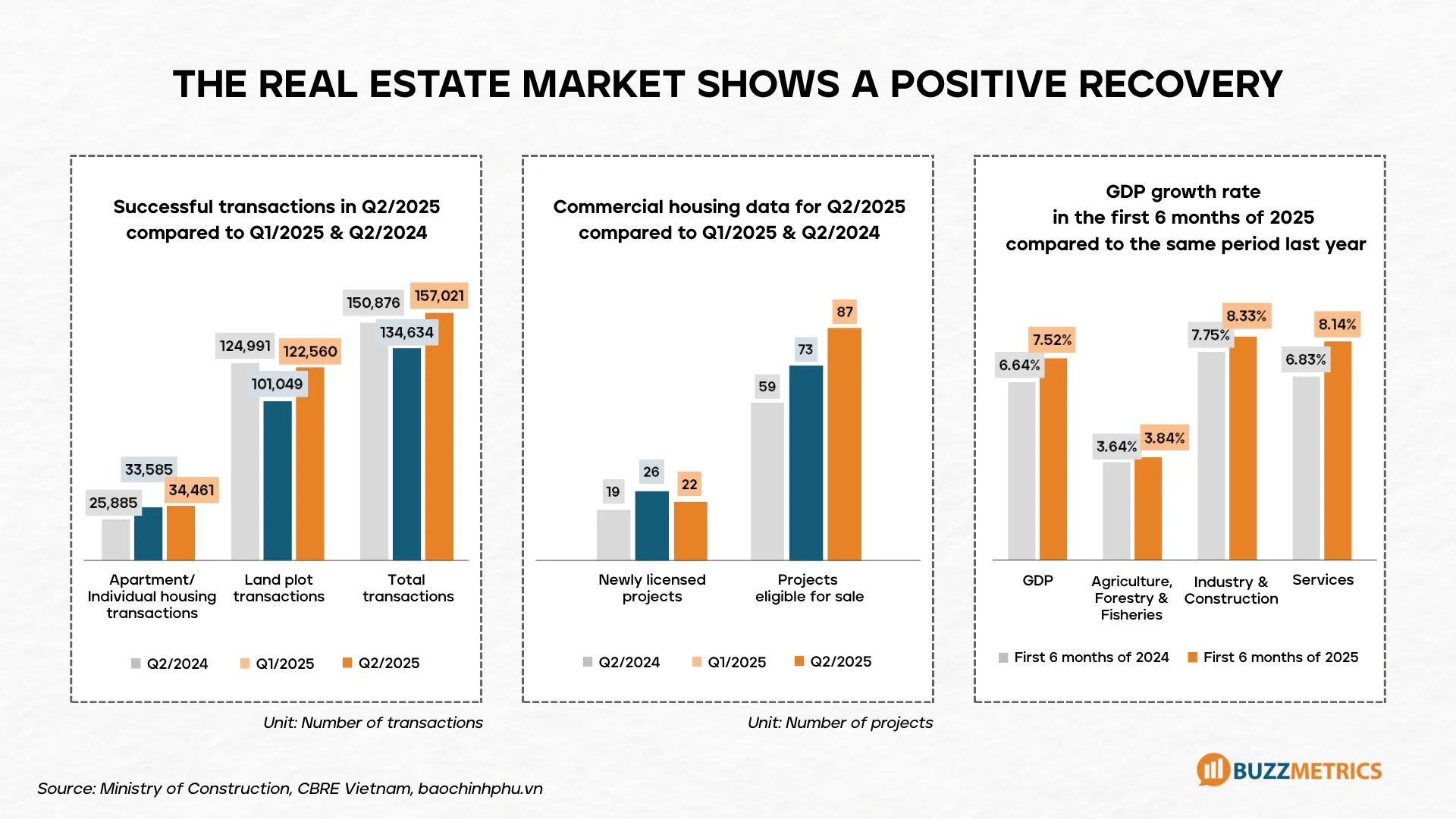
Buyer sentiment data reveals that 64% enter the market to live in, while only 36% buy for investment. The three best-performing property types - land plots (33%), apartments (30%), and private houses (21%) - are all closely tied to the need for stable living. Over the next 12 months, apartments and private houses continue to lead interest (31%), showing a shift toward long-term residence rather than short-term speculation.
Since early 2025, three financial policies were loosened simultaneously, quickly reshaping how buyers evaluate affordability:
On social media, these policies are not discussed as macroeconomic updates, but transformed into personal financial equations: “How much do I pay monthly?”, “How does lower interest affect total repayment?”, “Which project truly applies incentives?”
The pace of discussion shows buyers are no longer observing the market from afar; they are actively checking whether new incentives open the door for them to enter.
Adjustments to the Land Law, Housing Law, and the reclassification of merged urban areas are creating new development axes for satellite regions - especially attractive for the mid-range segment (≤ 3 billion VND). Buyers are willing to move farther from the center in exchange for clear legal frameworks, improved infrastructure, and long-term value.
In discussions, buyers focus heavily on areas newly rezoned or proposed to become new urban centers. They no longer view planning as a signal for price growth but evaluate its effect on daily life: commute convenience, school routes, and the potential for a stable residential community.
The first six months of 2025 recorded over 5 million discussions related to residential real estate. Conversations gradually increased and peaked at 281,000 mentions in early August - coinciding with intensified news about credit packages, legal updates, and provincial-city mergers.
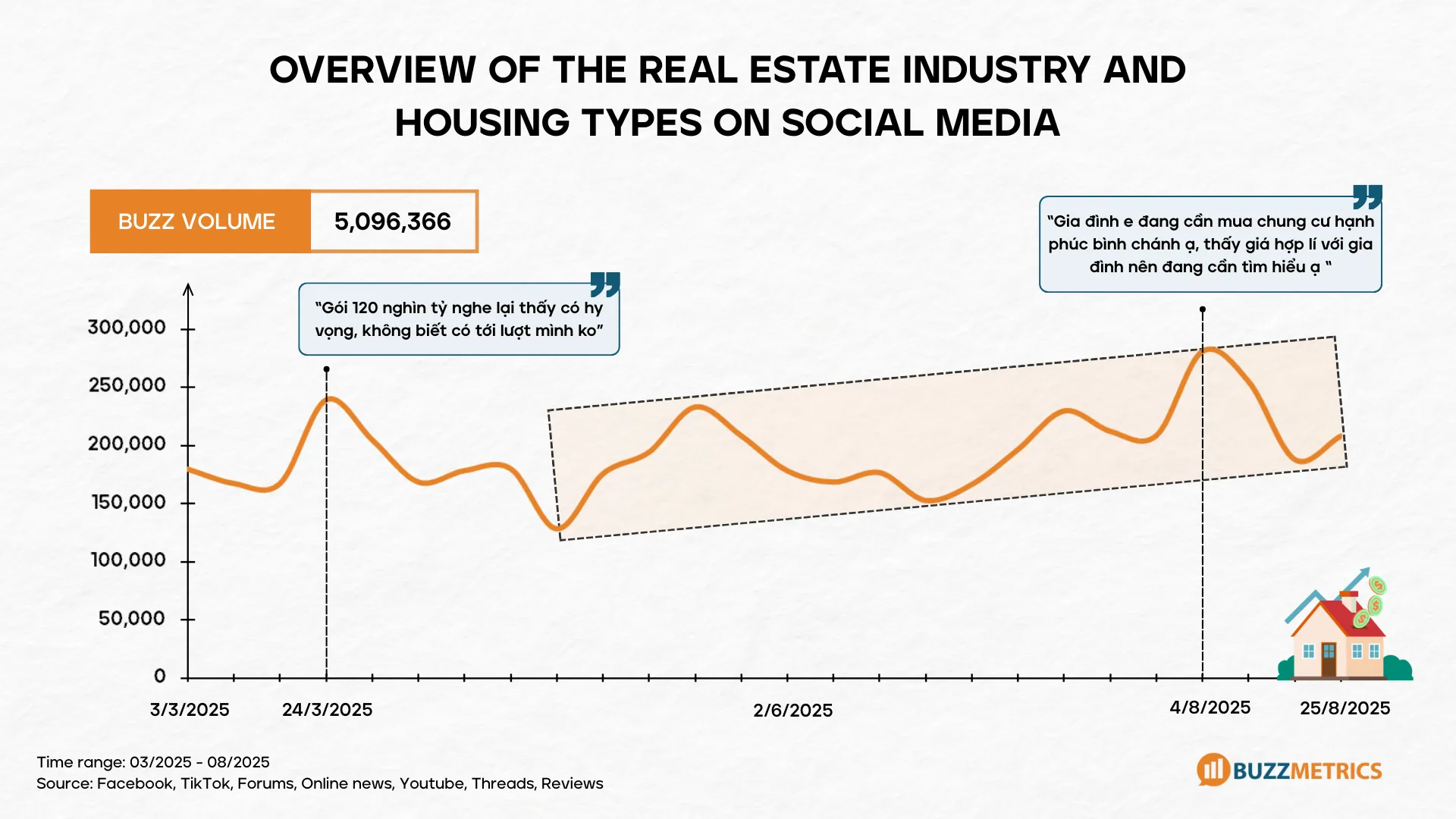
The key insight is not the volume, but the shift in discussion content. Buyers are moving from general observation to problem-solving behaviors tied to decision-making: safe loan structures, which policies actually apply, and whether new planning affects commute times or daily convenience. Housing consideration is being shaped by foundational factors: loan capacity, legal clarity, and urban structure - not speculative price expectations.
Beyond typical topics like price, location, and legal status, new discussion themes emerged: comparing bank interest rates, optimizing loan packages, and weighing pros/cons between mid-range apartments and suburban land plots.
Facebook (84.4%) and TikTok (14.4%) dominate conversations, each taking on distinct roles:
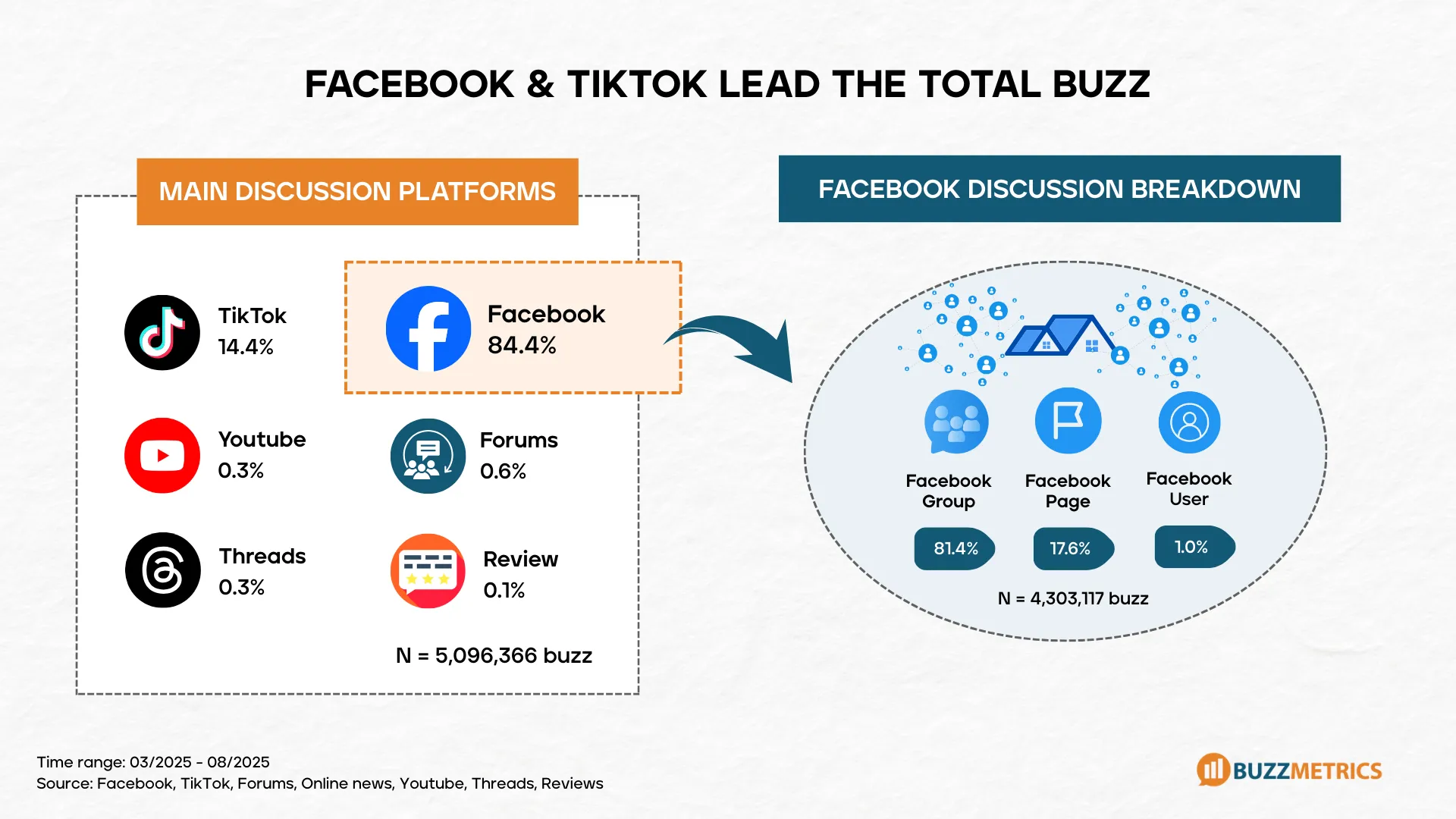
Facebook functions as an ecosystem where buyers ask questions rarely addressed by official channels: handover quality, hidden fees, management responsiveness, safety, or resident conflicts. These real experiences shape expectations and directly influence which projects earn trust or are excluded.
On the contrary, TikTok becomes a “virtual property tour,” where users verify what they’ve heard through visuals: construction progress, landscaping, resident density, mobility experience, and overall liveability. Together, these platforms not only reflect demand but actively shape each step in the buyer’s decision-making process.
Although brokers still dominate discussions (75.1%), a noteworthy shift is the rise of authentic voices: real buyers and current residents now account for over 20% - the highest in three years. This group is the most trusted, as they reflect lived experience rather than sales-driven narratives.
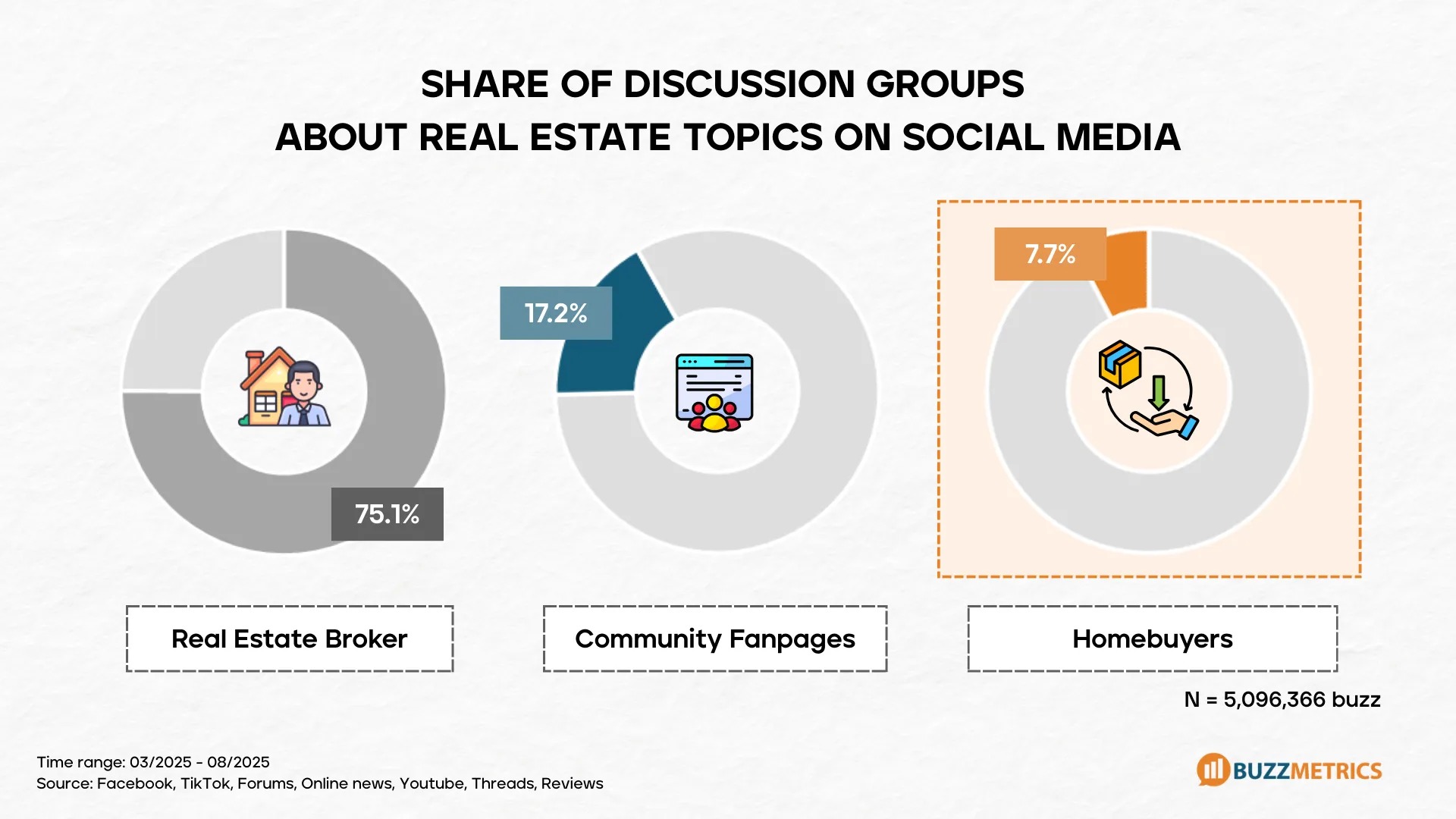
Leading much of the conversation are financially capable young adults - especially small-business families and successful singles aged 23–35. Their budgets center around 2–5 billion VND, aligning with urban living needs and early asset-building goals. A consistent trait of this group is their daily reliance on social media and preference for community validation over broker advice.
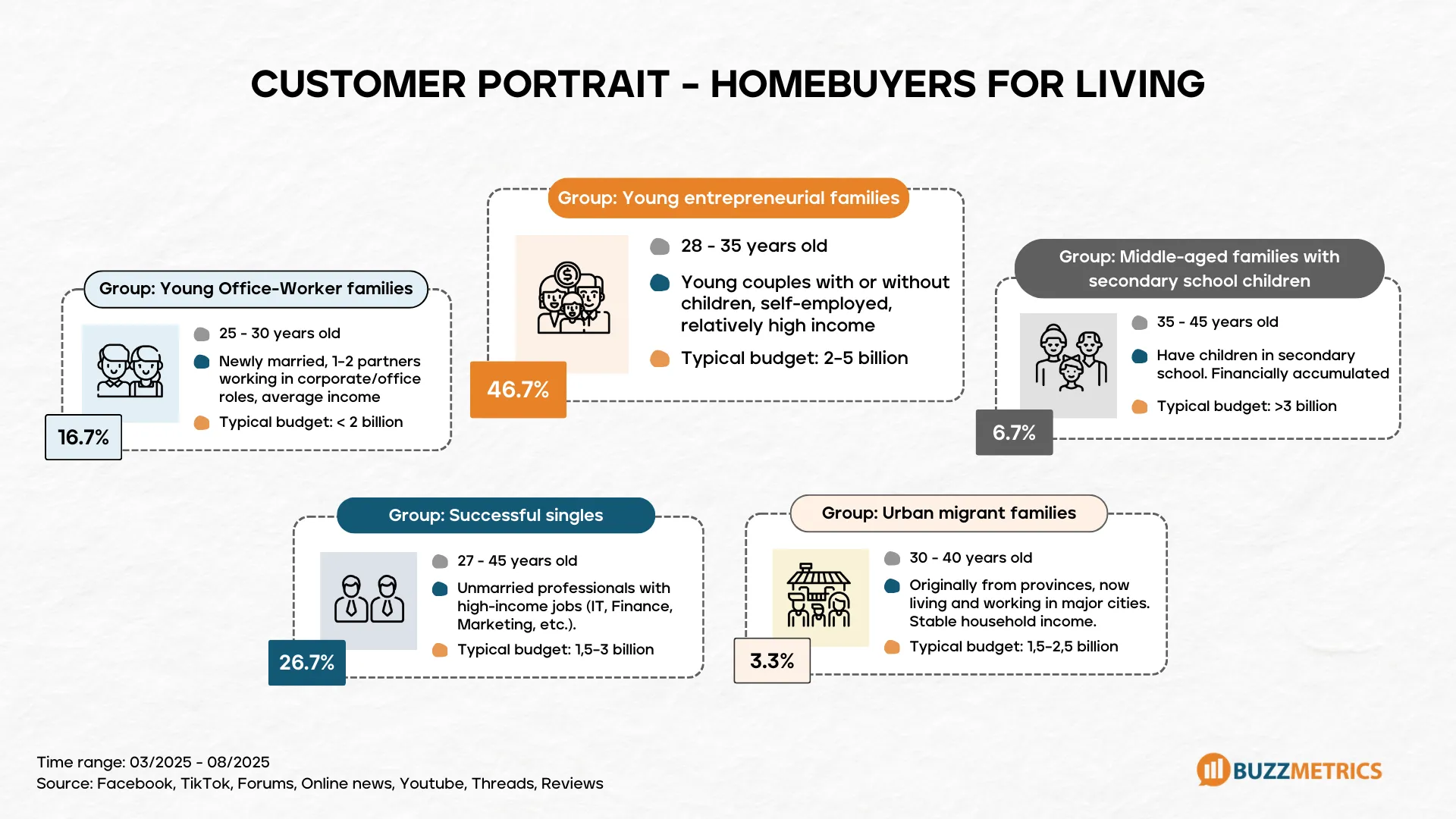
Behavioral data shows social media is not just a reference channel but the primary space where buyers form nearly their entire decision, especially during two stages: Information Search and Infomation Ask & Sharing. By 2025, most buyers only meet brokers or visit show units after forming a “preliminary conclusion” on social - a shift not common in previous years.
.webp)
Over 49% of discussions occur in the first stage, showing that buyers turn to social media to establish basic criteria: reasonable price, suitable location, secure legal status, and reliable developers. This is when they start identifying which options are feasible and which risks should be avoided.
The importance of this stage lies not in the amount of information gathered, but in the ability to narrow down choices. When legal risks, slow progress, or unaffordable prices are detected early in discussions, buyers immediately eliminate those projects - helping the journey focus faster.
This initial filtering lays the foundation for the next stage. Once a shortlist is created, buyers begin asking more personalized questions.
This stage accounts for the largest share of discussion (49.6%) and is when buyers reveal their true needs. Conversations shift from general information to project-specific questions: Is the commute feasible during rush hours? Does the unit layout fit a family of 3–4? Are management fees stable? How is the current resident community?
If the Information Search stage filters out unsuitable projects, the Consideration stage filters to find the most suitable ones.
Although only 0.4% of discussions happen at this stage, it serves as a validation rather than an exploration phase. Buyers visit show units to verify the information they’ve collected from social media over the first two stages. Observations - lighting, hallway conditions, finishing quality, and facility operations - are compared against resident feedback, video reviews, and group discussions. If the actual experience aligns with social media insights, the project is added to the final selection. Significant mismatches, however, lead to immediate rejection.
Only 0.6% of discussions occur at the purchase stage, reflecting that the decision is almost entirely shaped in the first two stages. At this point, buyers merely complete the paperwork; the project choice is no longer reconsidered. Social media has already done its job - building trust, narrowing options, and leading buyers to the final decision.
Observing the full discussion journey on social media, several key signals are reshaping how buyers approach the market:

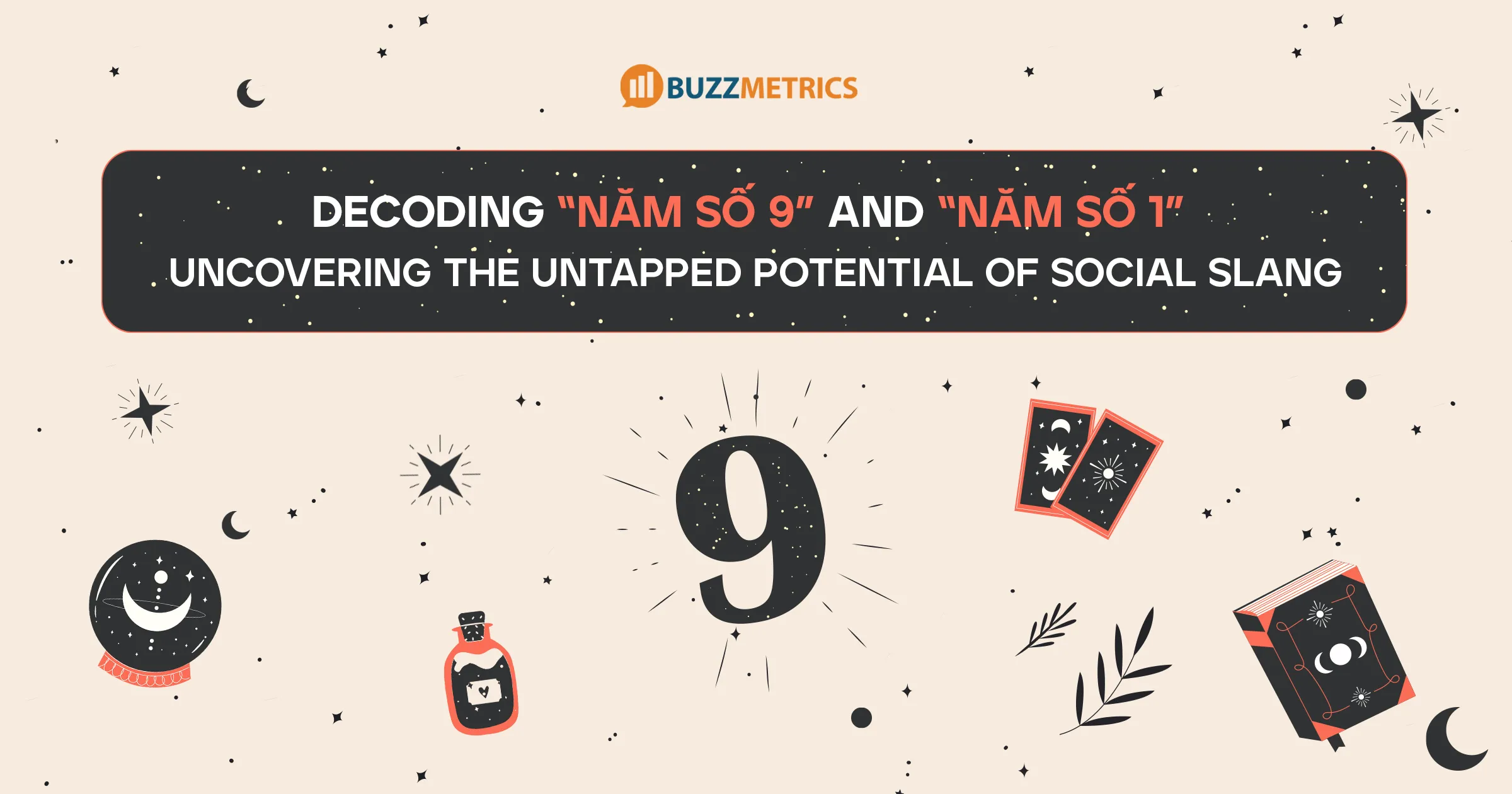
With over 1.1 million discussions and 53 million views across social platforms, “Năm Số 9” (“Year of Cleansing”) has emerged as one of the most viral social slang of 2025. Commonly associated with online drama and emotional turbulence, it’s often used by netizens to explain or react to any chaotic event—especially in entertainment. However, Buzzmetrics’ data reveals a deeper, more nuanced story behind “Năm Số 9.” Beyond its “drama-laden” surface meaning, let’s uncover what lies beneath this social slang phenomenon.
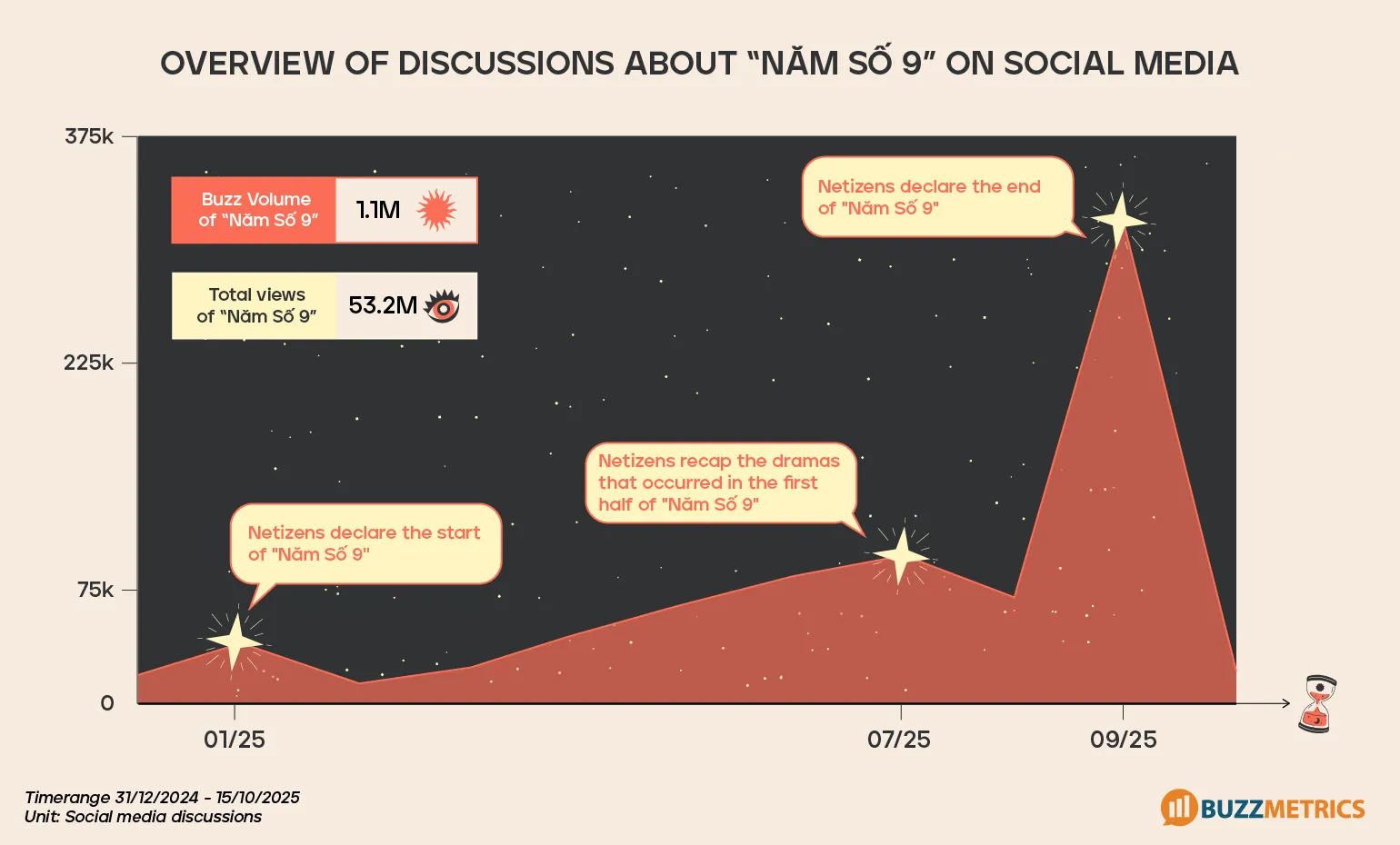
From the discussion timeline, Buzzmetrics identifies three major milestones for “Năm Số 9.” The first milestone was in January 2024, when users started sharing the concept of “Năm Số 9” while preparing for the new year. The second milestone came in July 2025, as people summed up the year’s first-half dramas. The next milestone was in September 2025, when social media was flooded with “reflection,” “cleansing,” and “closure” posts. Many users interpreted September as the symbolic end of “Năm Số 9.” Between these milestones, discussions were kept alive mainly by ongoing online dramas.
It’s clear that “Năm Số 9” is a social slang heavily shaped by online dramas, accounting for 84% of total discussions. Every social media scandal—especially in the entertainment scene—was humorously explained by users through “Năm Số 9” or “Năm Thanh Lọc” (“Year of Cleansing”)
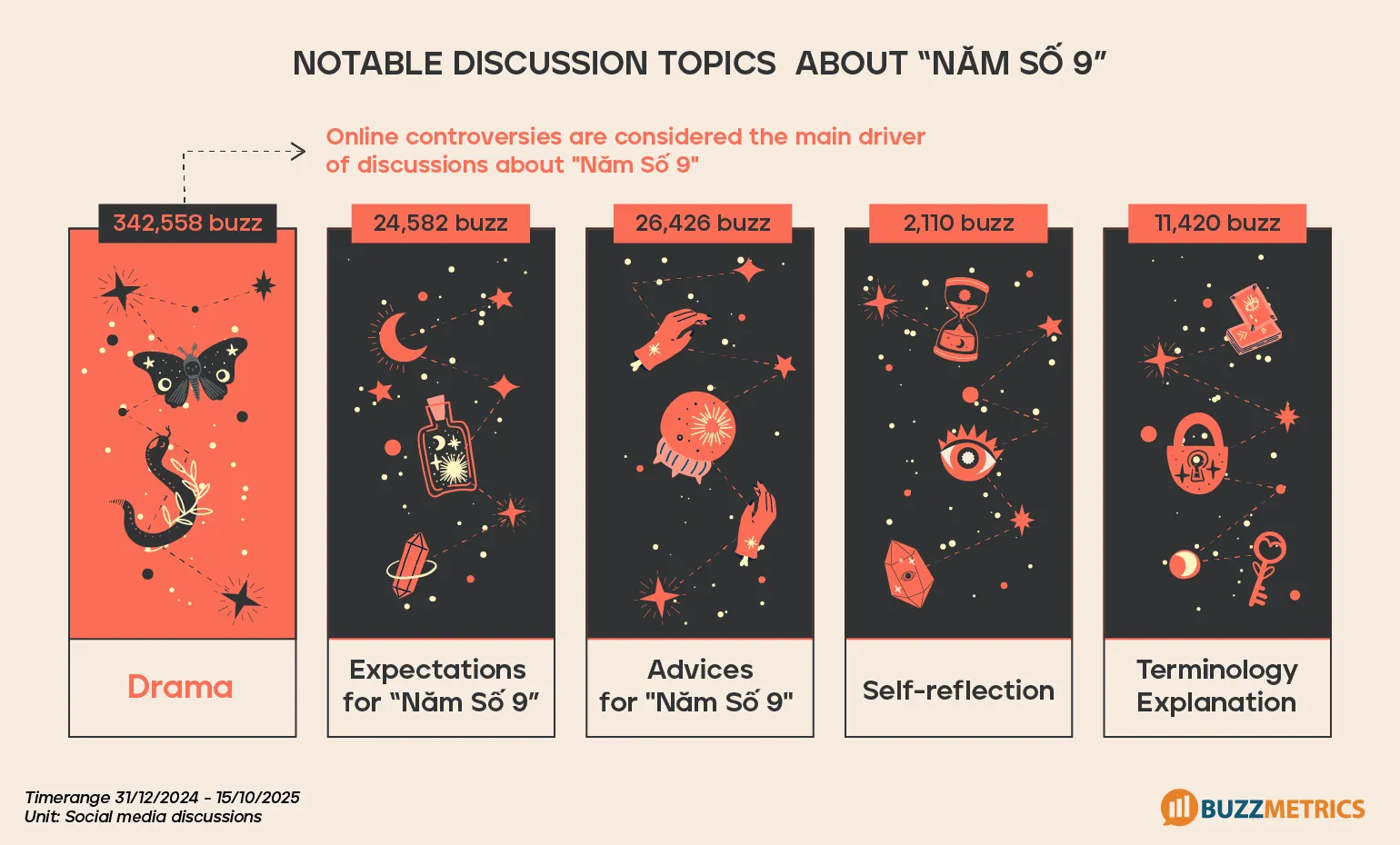
Compared to other social slang, “Năm Số 9” stands out for two main reasons:
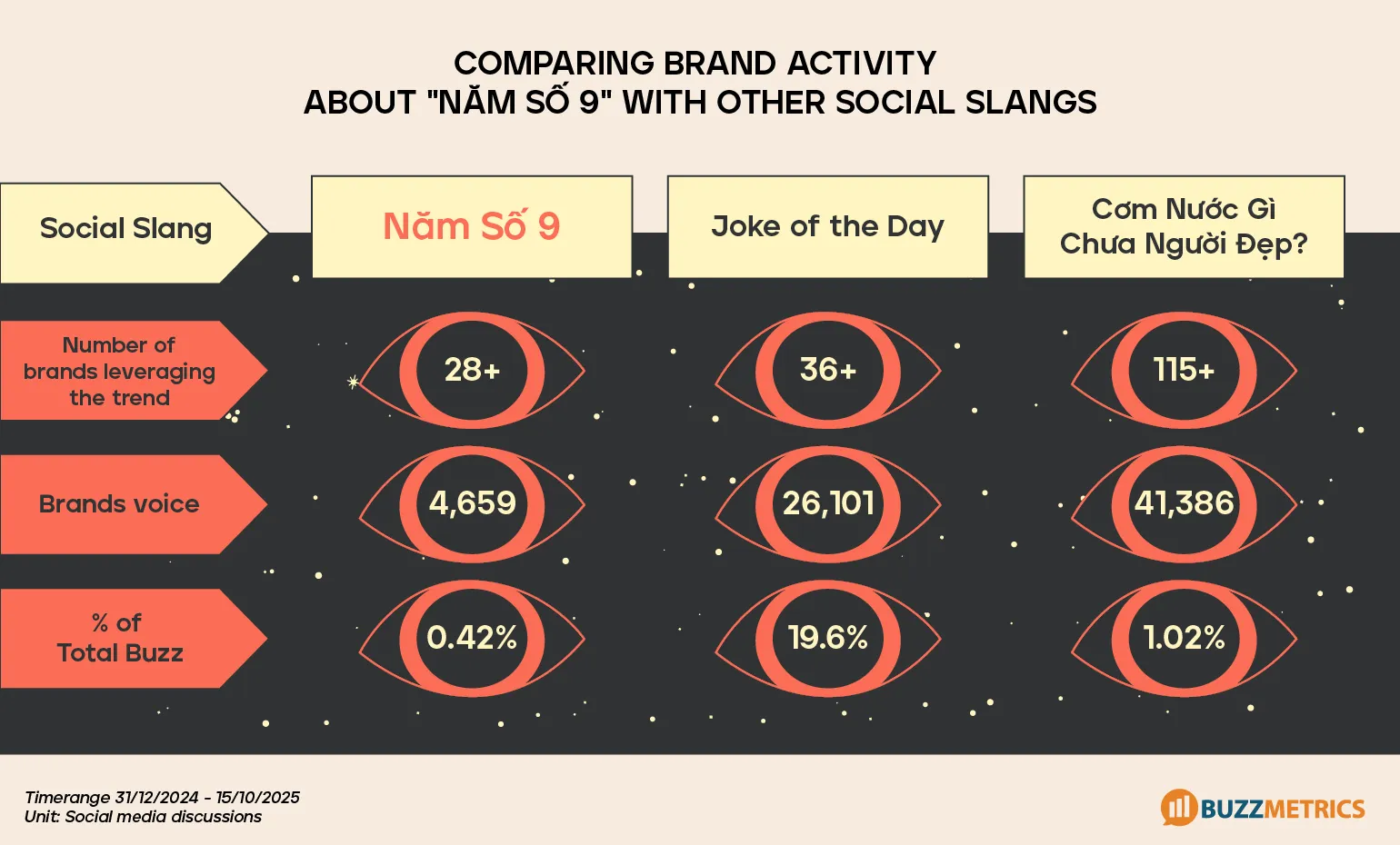
Despite its massive social footprint, brand participation remains minimal—less than 0.5% of total discussions, with only around 30 brands mentioning “Năm Số 9.” These figures are relatively low compared to “Joke of the Day,” another viral social slang from early 2025 that brands leveraged actively due to its flexible usage context. Because “Năm Số 9” is tied to drama, many brands remain cautious in using it. A few brands have referenced “Năm Số 9” in a more positive sense—linking it to mental or physical cleansing—but these efforts have yet to create significant media impact.
By October 2025, discussions around “Năm Số 9” began to cool down, while conversations about “Năm Số 1” (“Year of New Beginnings”) started to surge. If “Năm Số 9” represents a year of cleansing, “Năm Số 1” is seen as a year of planting seeds—symbolizing new beginnings and hope for growth. So, how does “Năm Số 1” differ in its discussion themes, and how can brands make use of it?
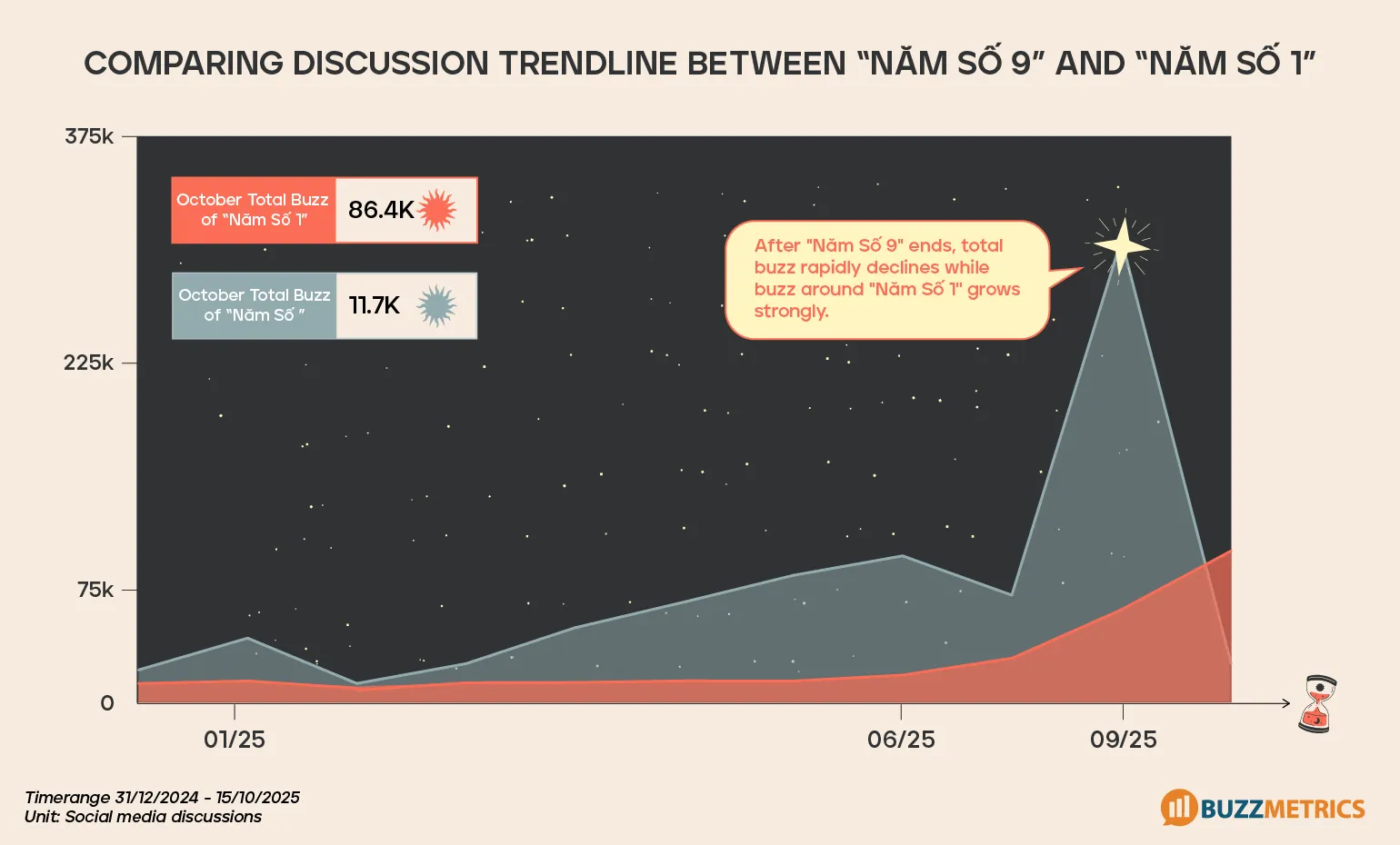
Unlike “Năm Số 9,” discussions about “Năm Số 1” revolve around positive and reflective narratives—messages of optimism, self-growth, and new goals. It’s a social slang dominated by affirmations, gratitude, peace, and emotional healing, making it a strong base for brands to convey inspirational messages.
In other words, if “Năm Số 9” tells a story of “reaping what you sow,” then “Năm Số 1” represents healing and renewal. Through “Năm Số 1,” social users reflect on their past journey, express gratitude, and spread belief in a better new phase ahead.
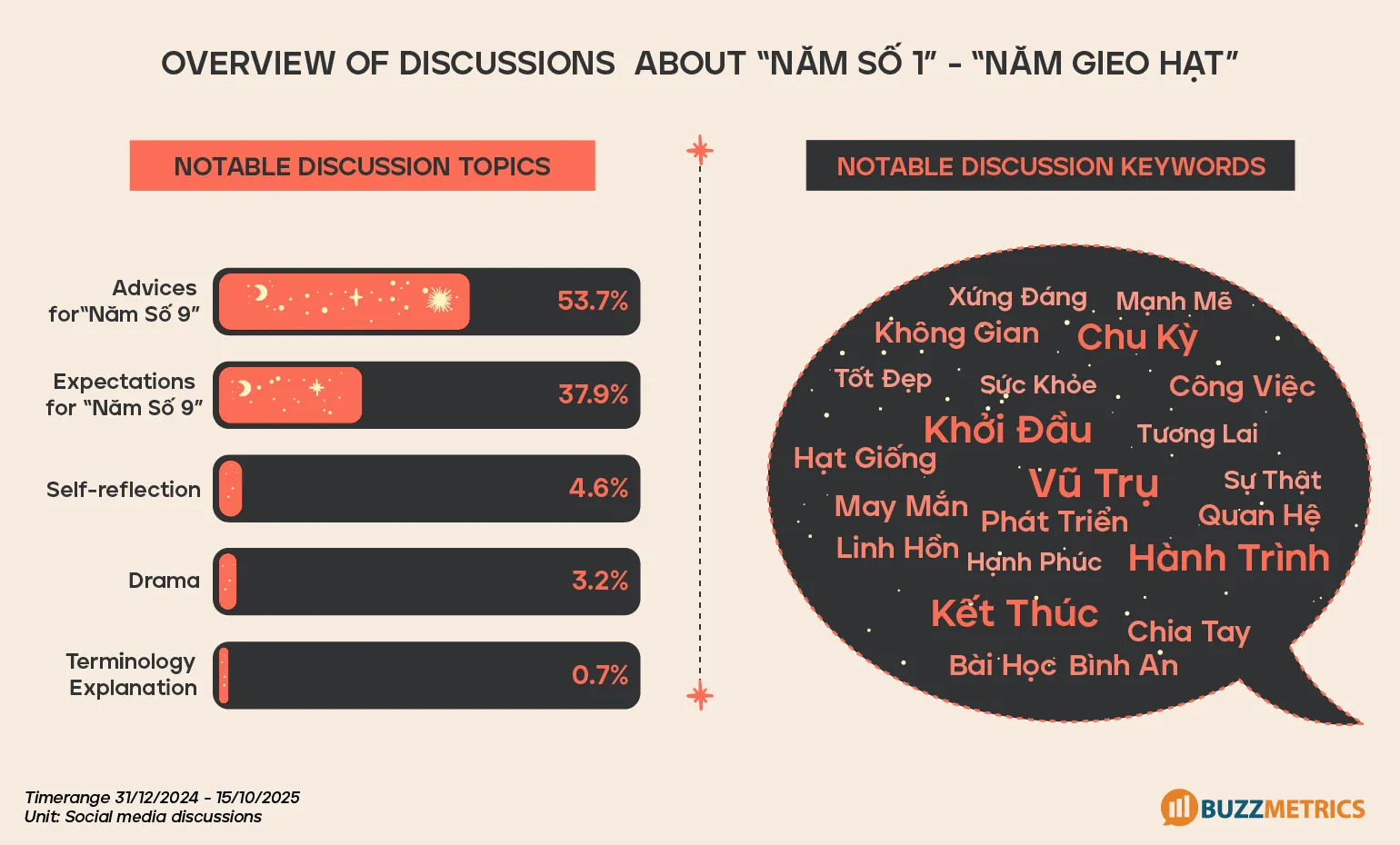
High-frequency keywords reinforce this positive tone—users repeatedly mention “ending,” “cycle,” “beginning,” “growth,” “gratitude,” “strength,” “peace,” and “love.” These words often accompany “Năm Số 1” in blessings and motivational posts.
So, how can brands leverage “Năm Số 1”? There are two main directions for brands to explore:
The duo of “Năm Số 9” and “Năm Số 1” is a fascinating social media phenomenon of 2025. The two Social Slang terms have an interesting correlation regarding:
It is highly likely that “Năm Số 1” will continue to receive user attention for an extended period and reappear in end-of-year review posts. This is a social slang that brands should pay attention to for their year-end communication content.

.webp)
According to a report from the Ministry of Health, as of June 2025, Vietnam has more than 10 million people living with chronic kidney disease, with the most concerning issue being the rapidly increasing rate of young patients. Meanwhile, in the first half of 2025, “kidney failure” emerged as a widely discussed topic across social media platforms. There have been over 637,000 discussions, with a sharp surge starting in March 2025 and continuing through July 2025.
In this context, the Buzzmetrics report will analyze the topic of “kidney failure” on social media from three perspectives:
From August 2024 to February 2025, discussions about kidney failure remained relatively stable. However, starting in March 2025, conversations on the topic grew significantly and peaked in June. Buzzmetrics’ observations show that media outlets and major news fanpages such as VTV24, Theanh28, and others played a major role in driving discussions about kidney failure.
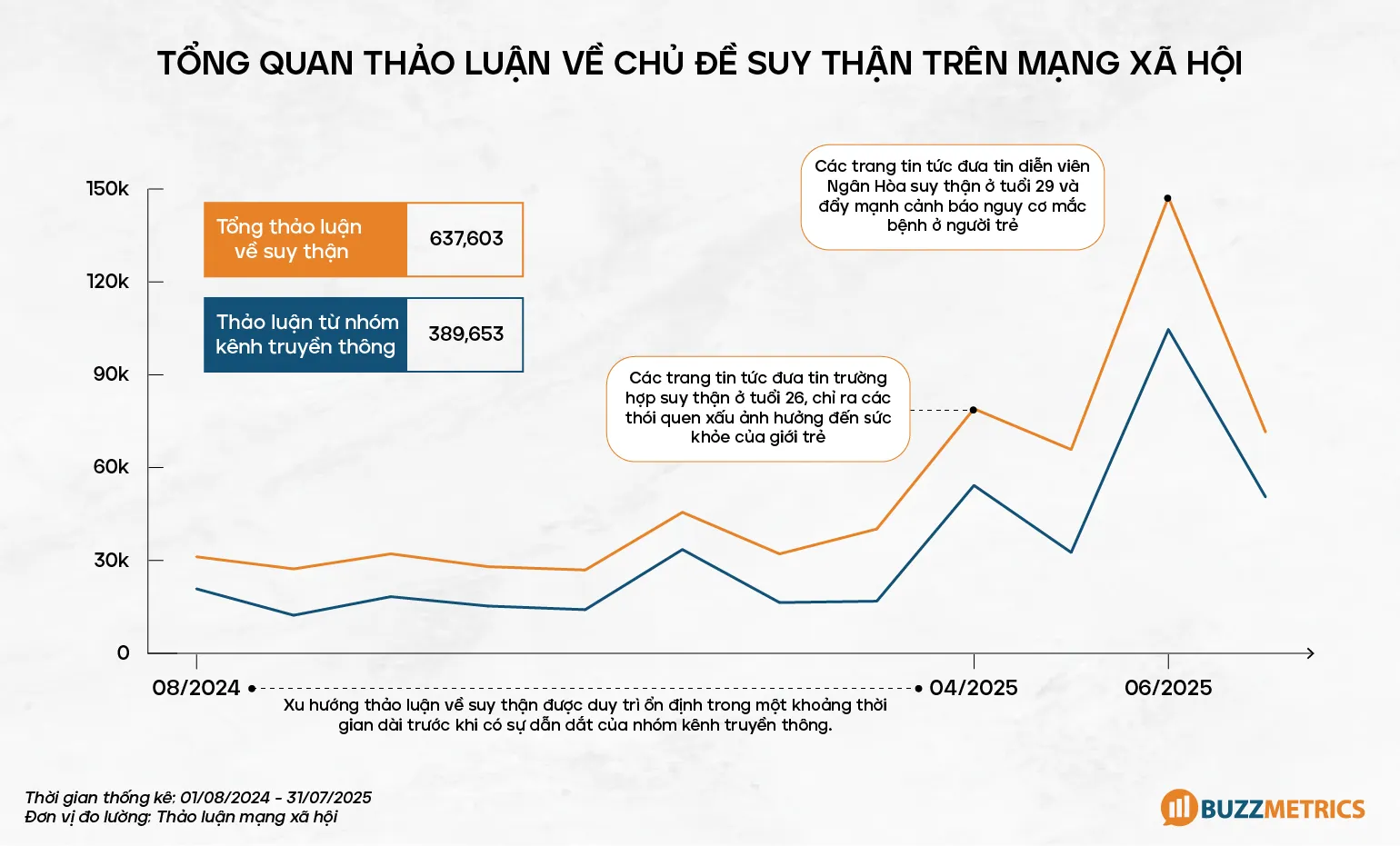
To give a more concrete figure on the role of media channels: 60% of the total discussions about kidney failure came from this group. During the months when discussions on kidney failure surged, the most engaging posts also originated from media channels. These outlets frequently featured stories of individuals suffering from the disease—particularly young people—in order to raise awareness within the community about unhealthy lifestyle and eating habits. Content in the form of “the journey leading to kidney failure” was repeatedly highlighted, generating strong sharing and discussion effects on social media.

Overall, during the one-year survey period, “kidney failure” shifted from being a relatively stable topic on social media to becoming a hot topic, largely driven by strong media coverage, with a particular focus on kidney disease cases among young people. The process of how Kidney Failure became a hot topic can be broken down into four stages:
(1) Individual users share their personal experiences with kidney failure;
(2) Media channels amplify these stories;
(3) Other users take interest and continue to share widely
(4) Health experts provide deeper insights into kidney failure.

The next questions to ask are: Which groups of users are interested in kidney failure? Which groups are most influenced by the media? And how do these users respond?
Analysis of discussion data shows that there are two major groups of users talking about kidney failure: (1) those who do not have kidney disease but show interest, and (2) kidney failure patients. Among them, group (1) accounts for up to 64% of the total discussions on kidney failure, even though they made up only 11% of discussions in 2024 alone. Notably, 89% of discussions from this user group indicated that media coverage was the driving force behind their growing interest in the topic. This group also clearly demonstrates the shift from a purely medical concern to personal worries about lifestyle.
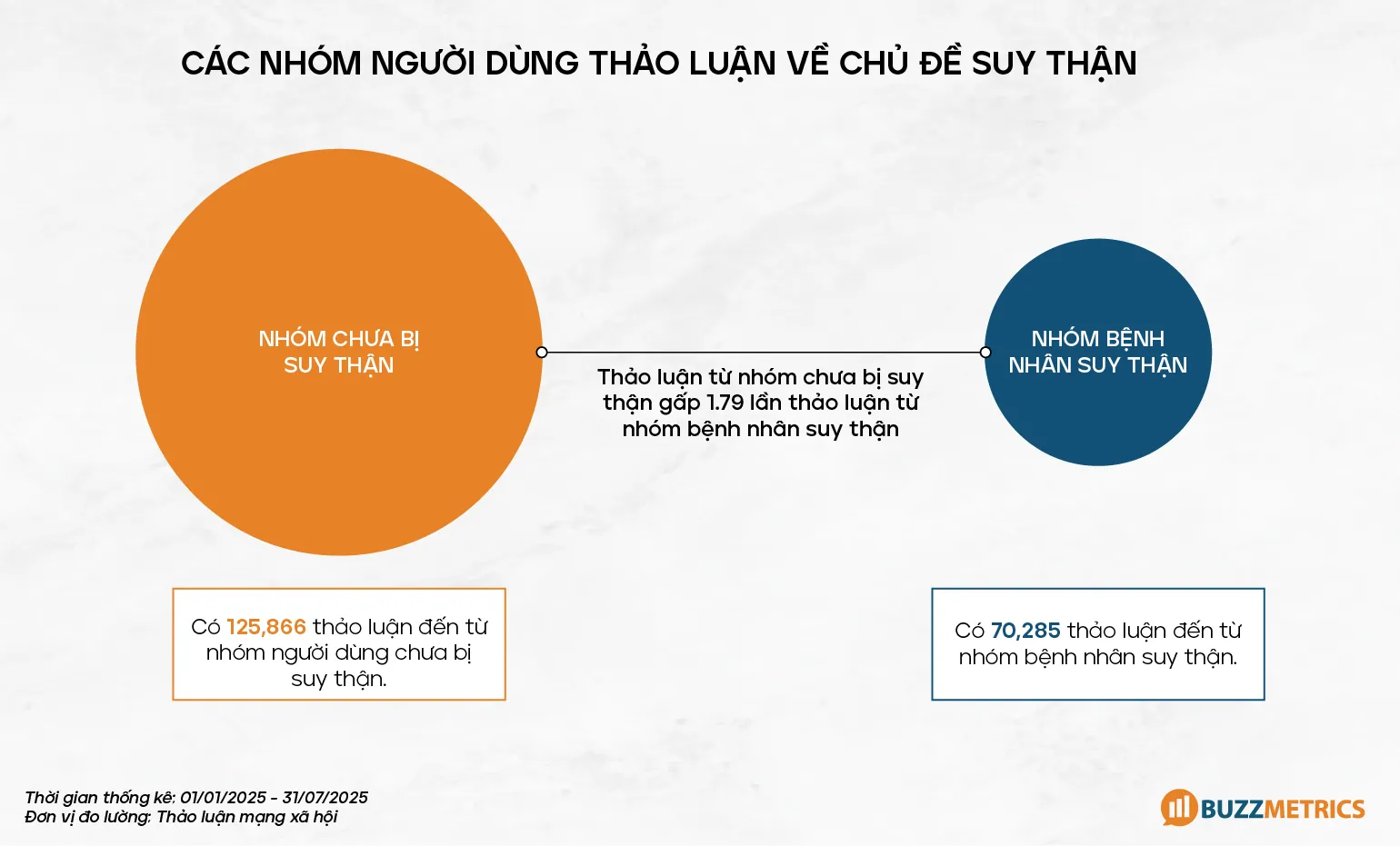
When discussing the causes, most conversations focus on daily eating and lifestyle habits. Specifically: consumption of sweets (55.8%) is the most frequently mentioned factor, reflecting the strong influence of media narratives about the harmful effects of milk tea and carbonated soft drinks. Staying up late (26.7%) stands out as a “bad habit” typically associated with young people. Other factors such as smoking (9.6%), prolonged stress (8.3%), and heavy alcohol consumption (7.4%) are also often linked to kidney failure, showing how concerns have expanded from diet to overall lifestyle.
More “traditional” medical factors such as age (5.5%), obesity (2.8%), or overuse of painkillers (1.7%) account for only a small share, highlighting how the media has successfully shifted the spotlight toward everyday lifestyle choices rather than keeping the narrative centered on specialized medical conditions.

In discussions about prevention, this user group did not focus much on advanced medical interventions but rather on maintaining healthy daily habits. Exercise (45.3%) was the most frequently mentioned solution, indicating a shift from worry to positive action. Getting enough sleep (23.1%) and drinking plenty of water (16.4%) also ranked highly, reflecting interest in simple yet practical adjustments.
More medical-oriented measures such as regular health check-ups (7.9%) or dietary adjustments like reducing sugar, eating less salt, and consuming more vegetables — along with “harder-to-practice” behaviors such as cutting down on alcohol (0.7%) or avoiding meat (0.2%) — were mentioned far less.
This shows that users primarily opt for solutions that are easy to integrate into daily life, while paying less attention to in-depth medical check-ups or difficult lifestyle changes (such as abstaining from alcohol or meat). This reflects an opportunity for healthcare communication and brands: to help transform concern into concrete, long-term actions.
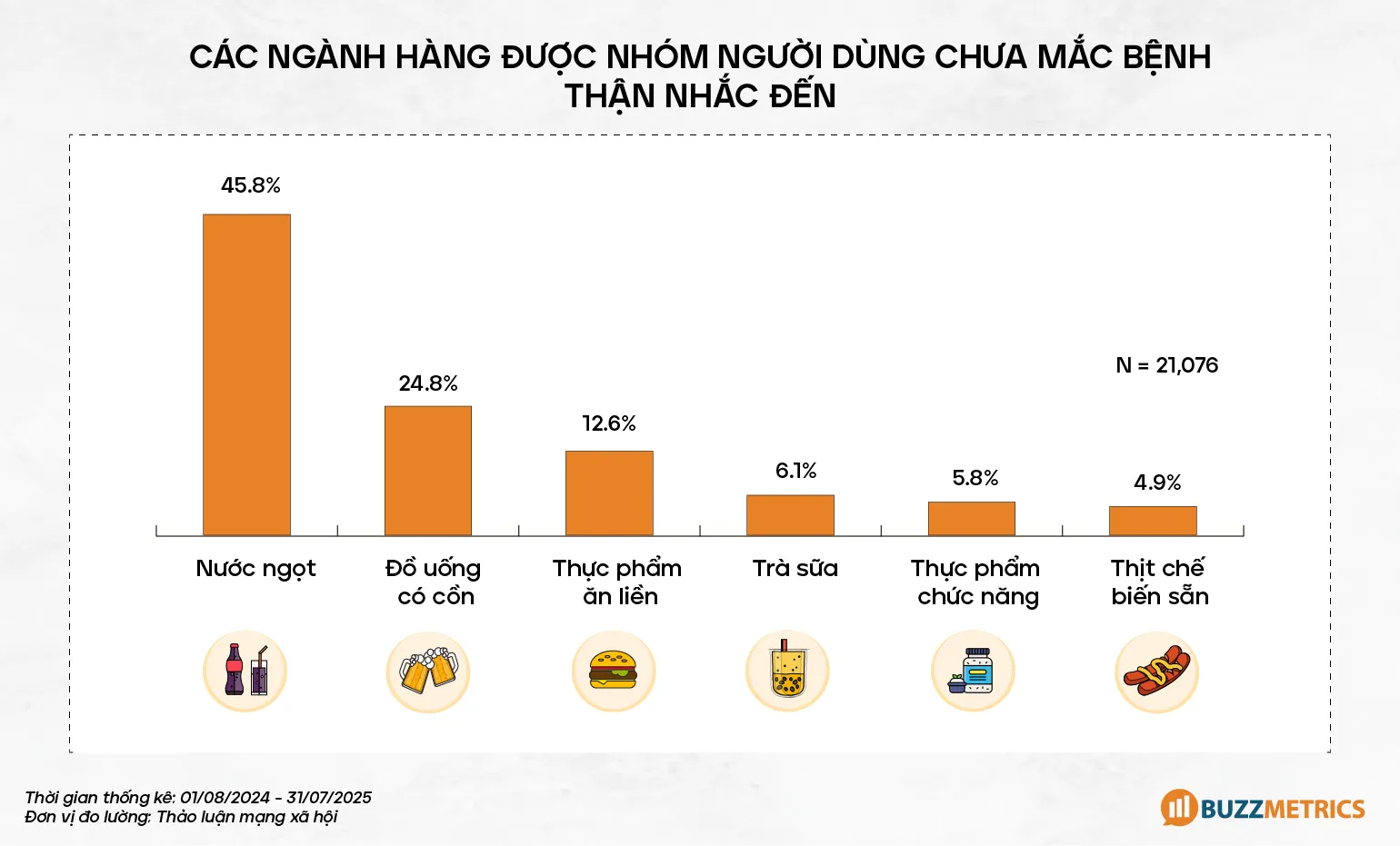
As mentioned in Section 2, when discussing the causes of kidney failure, users did not only refer to medical factors but also directly connected the issue to everyday consumer industries. Popular food and beverage products became the “center of concern.”
It is clear that “kidney failure” is not just a topic confined to healthcare but also a consumer issue, posing challenges for brands. Specifically, brands risk being drawn into negative discussions if their products are linked to harmful health factors. However, this also presents an opportunity for brands to develop product lines or messages in a healthy – safe – health-conscious direction.
For example:

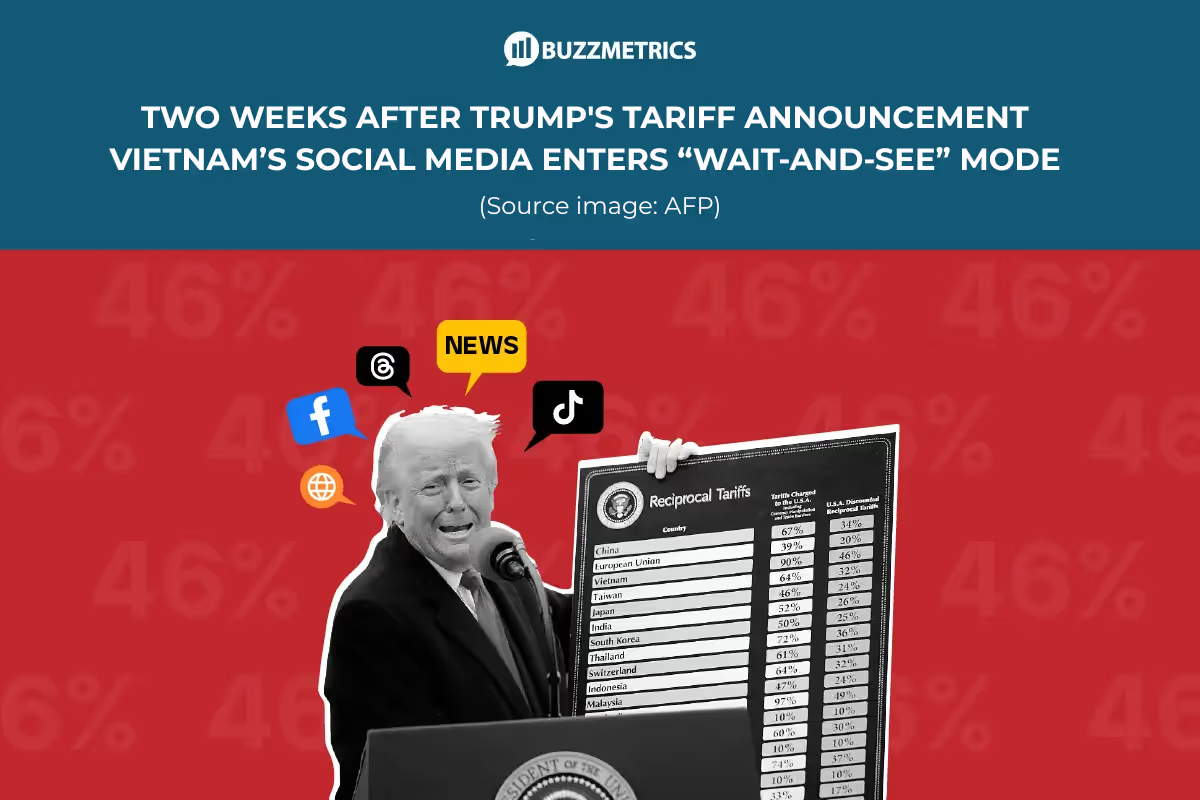
Over half a million discussions were generated in less than a week, making the tariff policy announced by President Donald Trump one of the most memorable topics on Vietnamese social media in 2025. The topic stirred significant attention during the first half of April due to its potential impacts on the daily lives of Vietnamese citizens. Join Buzzmetrics as we analyze how discussions around the U.S. tariff policy evolved over the first two weeks.
The topic of tariff policy reached its first and highest discussion peak on April 3rd - the day President Donald Trump announced a 46% tariff on Vietnam. Prior to this date, there were only minimal discussions on the topic, mostly consisting of general forecasts. According to Buzzmetrics’ initial report on the tariff policy, as of 12 PM on April 3rd, the topic had generated 30,153 mentions. By the end of the day, total discussions had climbed to 73,032. Throughout the following week, the daily volume of discussions never dropped below 20,000. On April 10th, the topic peaked once again, this time marking the moment when President Trump officially enforced the tariff policy, before later announcing a 90-day delay in its application for Vietnam.

The stock market was undoubtedly the most active sector in response to Trump’s tariff policy. On the morning of April 3rd alone, the VNIndex plunged by 82 points (6.2%), nearing the floor limit - its sharpest drop in the past three months, based on preliminary market data. Many investors expressed concerns over a potential prolonged sell-off, with nearly 2,000 related online discussions. The market remained sluggish until April 10th, when Trump announced a three-month delay in the implementation of the retaliatory tariffs. Several media outlets even used the term “deep purple” (implying limit-down in Vietnamese market slang) to describe the stock market’s condition at that time.
Other sectors such as Agriculture, Electronics, and Textiles also became hot topics of discussion. These industries are directly impacted by tariffs, facing the risk of declining orders, withdrawal of FDI and restructuring of global supply chains, leading to potential consequences for employment and domestic production. Unlike the stock market, even after the retaliatory tariff policy was postponed, a portion of users continued to express concerns about these industries, suggesting that Vietnam must prepare for the most pessimistic scenarios.

Fundamentally, the spread of the tariff policy topic followed a similar trajectory to other trending issues: it was first driven by news outlets and online media (notably VTV24), then gradually expanded to other platforms. In fact, during the first 12 hours, news sources accounted for up to 30% of all topic-related discussions. Over time, while traditional media was no longer the largest discussion channel, it continued to play a key role in shaping and directing public discourse.
Unlike most trending topics that usually generate high engagement on Facebook or TikTok, the tariff debate attracted widespread discussions across both long-standing platforms (such as forums and news sites) and newer ones like Threads, with varied formats of engagement. Buzzmetrics observed that Facebook and TikTok reacted quickly to press coverage, with conversations occurring in real time. Meanwhile, Threads and forums tended to feature more in-depth and forward-looking discussions. In 2025, few topics have triggered cross-platform engagement as intensely as the U.S. tariff policy.
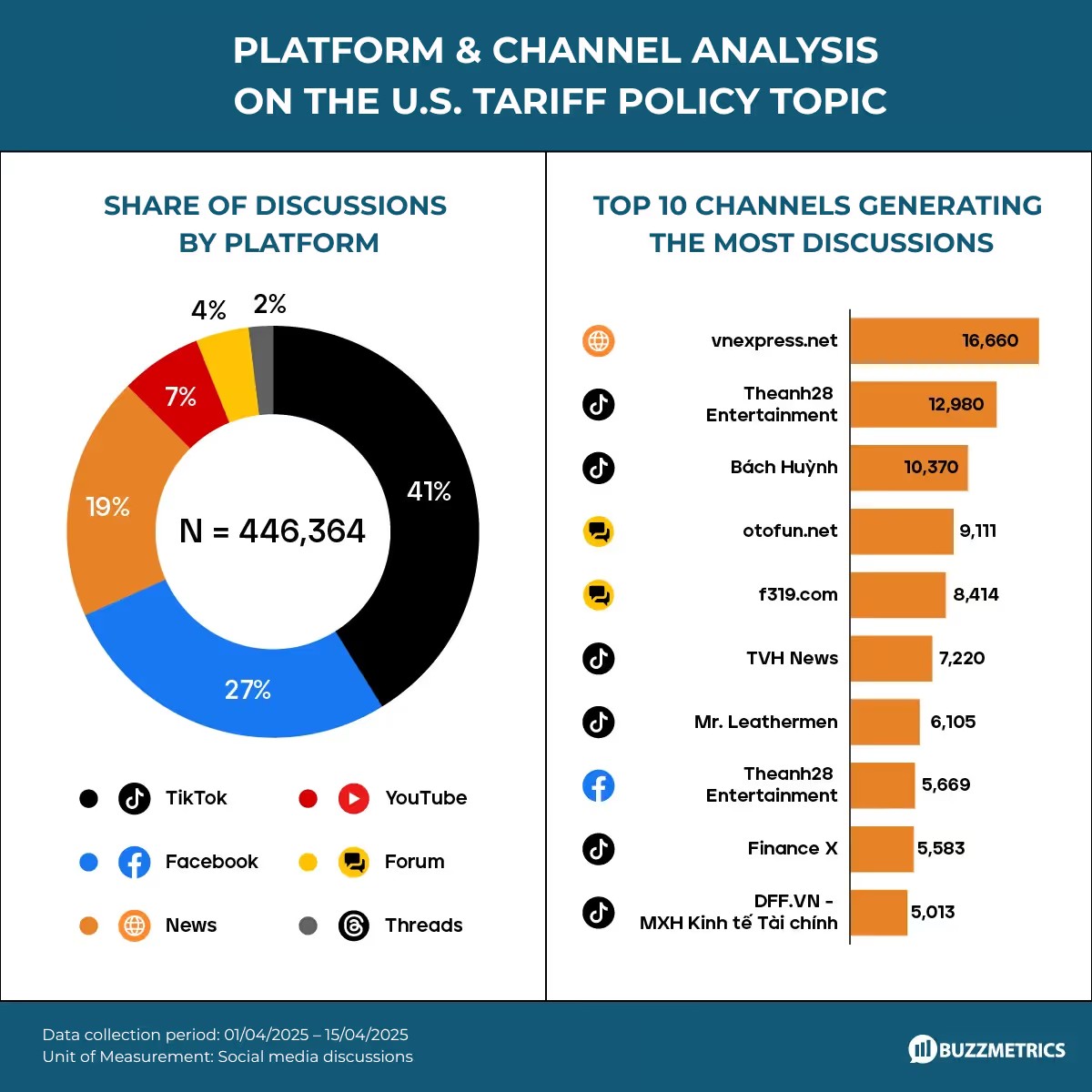
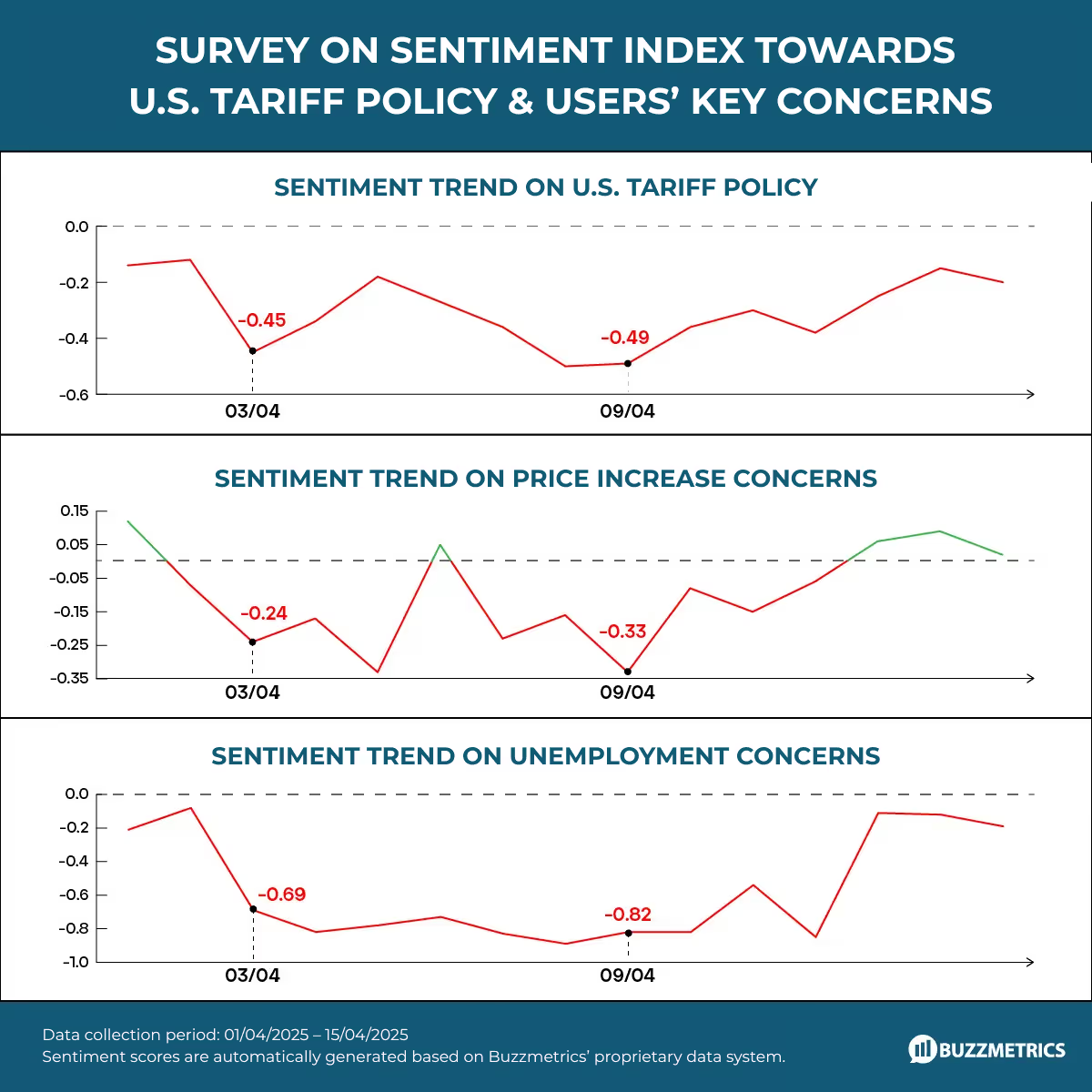
Meanwhile, sentiment analysis from Buzzmetrics shows that on April 3rd (the date the policy was announced), the sentiment score dropped to -0.451, the second-lowest point during the monitoring period. Users expressed confusion over how the U.S. tariff was calculated and showed concern about Vietnam’s economic outlook. In the following days, sentiment slightly improved after General Secretary To Lam met with President Trump to negotiate tariff adjustments. At this point, user sentiment became more optimistic, with hopes that the situation would improve. However, by April 9th - when the policy officially took effect - the sentiment score hit its lowest point at -0.49. Then on April 10th, the sentiment score recovered after President Trump announced a delay in implementing the tariff policy. This marked a turning point in what could be described as an emotional rollercoaster for Vietnamese users, partially reflected in the shifts in social media discussions. By April 15th, the online community in Vietnam appeared to be “breathing a sigh of relief. User sentiment toward key concerns such as “unemployment” and “rising consumer prices” also improved, returning to levels similar to those before the tariff issue emerged.

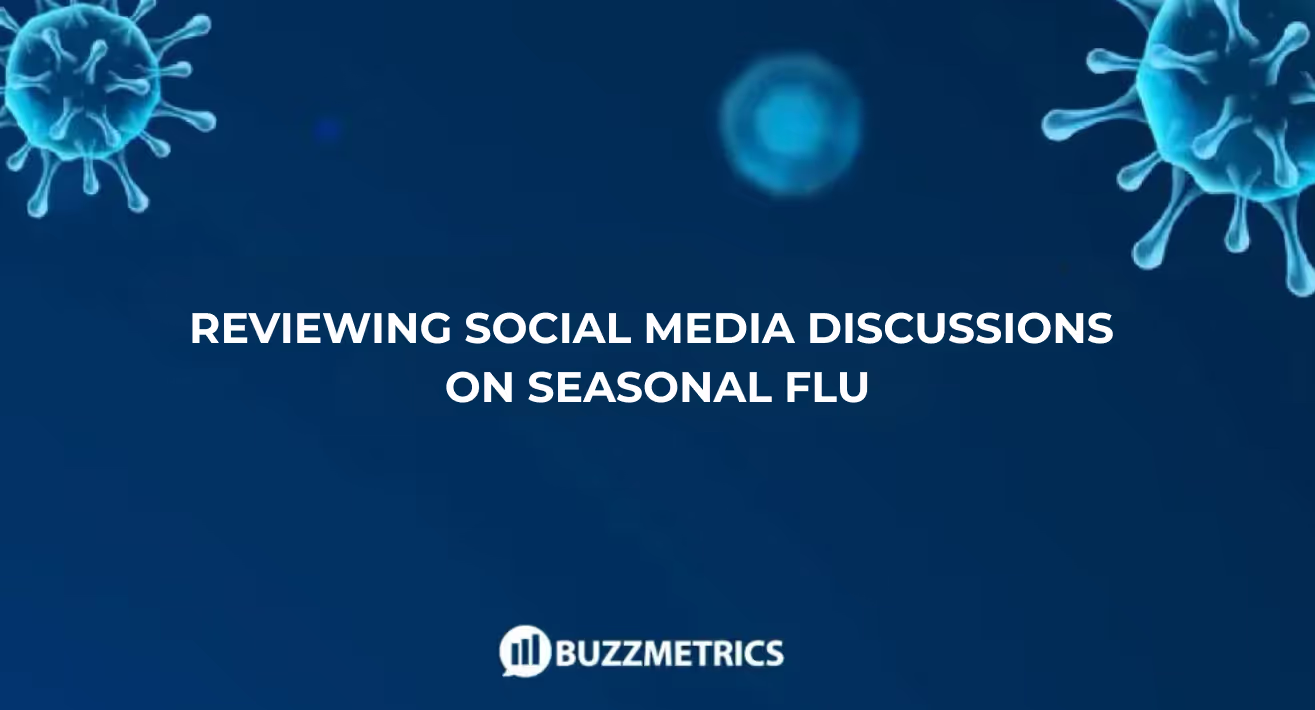
In the context of increasingly unpredictable developments in infectious diseases, seasonal flu - once thought to be all too familiar - has once again become a focal point on social media. Driven by the effects of global information flow and the rapid spread of content on digital platforms, discussions around seasonal flu not only reflect user concerns but also reveal how communities approach, handle and respond to public health issues.
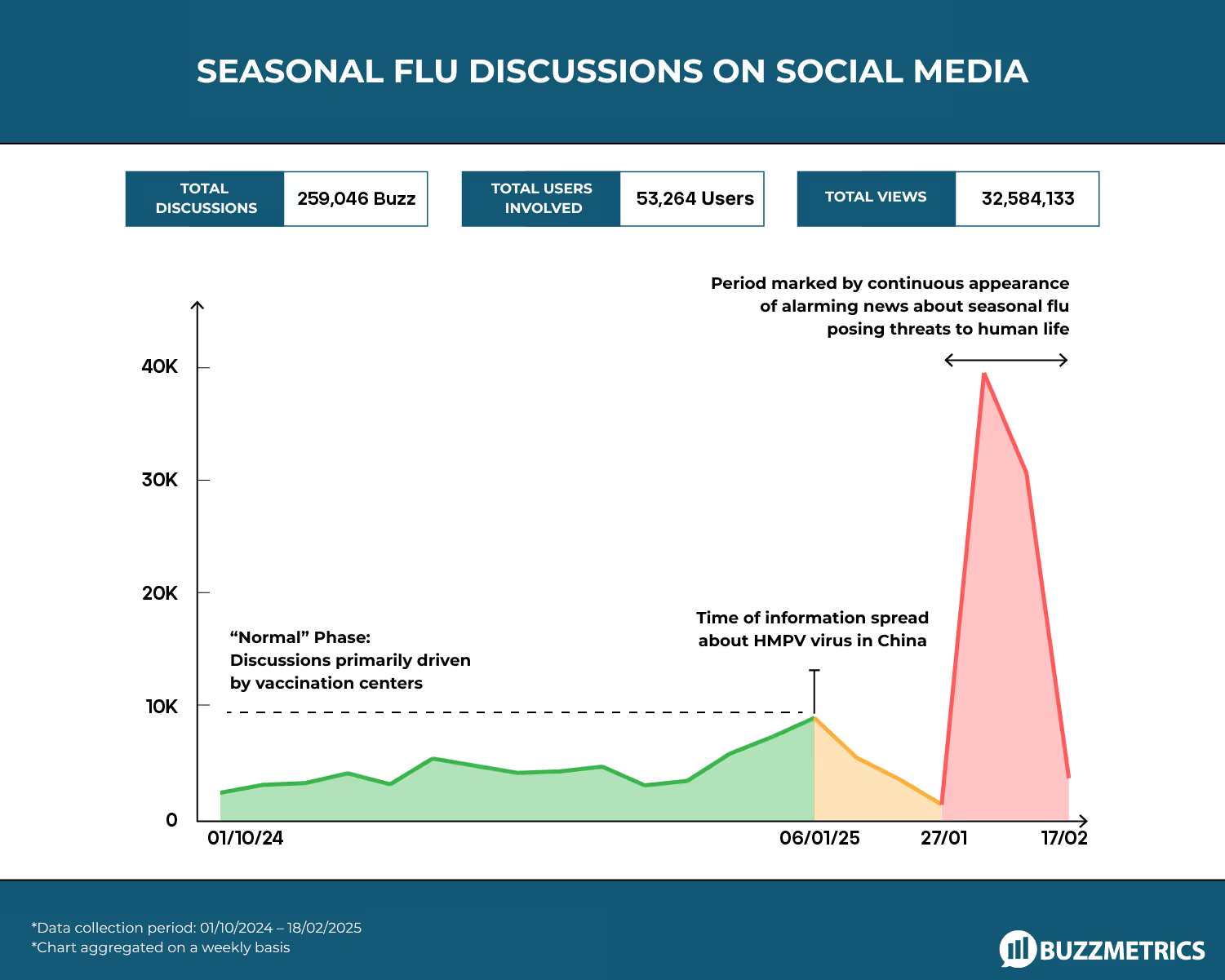
Data from the past 5 months indicates two notable surges in online discussions surrounding seasonal influenza:
- The first phase observed a moderate increase in conversation volume, primarily driven by public concern over a reported outbreak in China attributed to the HMPV virus. In the absence of clear information regarding the severity and nature of the disease, users expressed confusion and anxiety. However, thanks to the timely dissemination of verified information from health authorities and medical experts, public discourse quickly stabilized.
- The second phase, which began in early February, marked a more substantial and sustained wave of discussion, lasting at least until February 19. Multiple converging factors simultaneously captured the attention of the online community:
+ The passing of actress Barbie Hsu, reportedly linked to complications from seasonal influenza.
+ Japan reported 9.5 million flu cases.
+ The United States recorded 13,000 flu-related deaths, prompting widespread temporary school closures.
+ Several severe flu cases were also reported domestically.
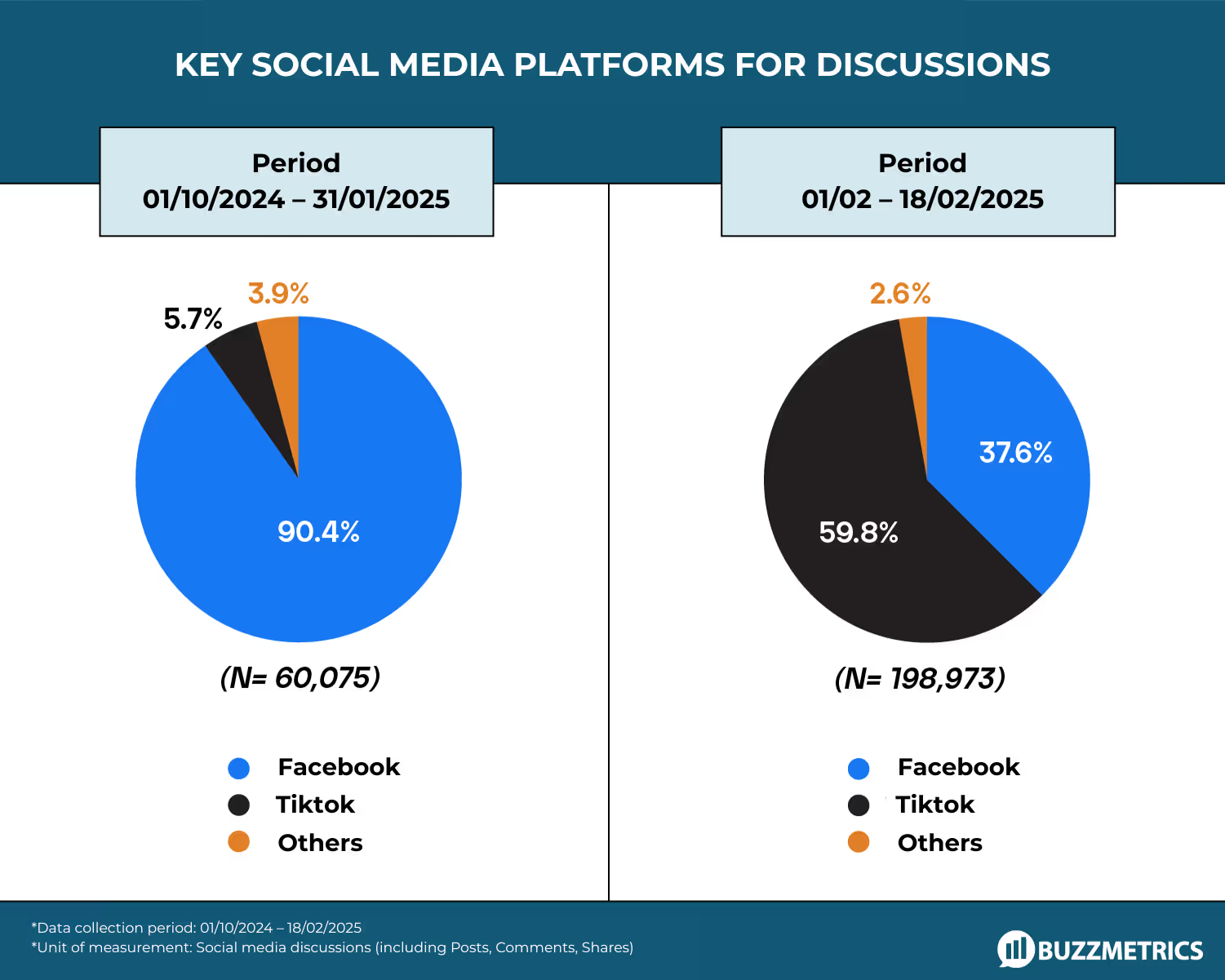
In addition to content fluctuations, the social media platforms where discussions take place also experienced significant shifts. During the “off-peak” period, Facebook remained the dominant platform in terms of discussion volume. However, entering the “peak” phase, TikTok emerged as a new hotspot, with its share of discussions surging dramatically from 5.6% to 59.8%.
TikTok didn’t just get people’s attention, it also proved how fast content could go viral on the platform: Each post related to seasonal flu on this platform generated an average of 282 discussions, far surpassing Facebook’s average of only 5. In less than three weeks, TikTok videos on the topic accumulated at least 26.4 million views, underscoring the platform’s exceptional reach and influence.
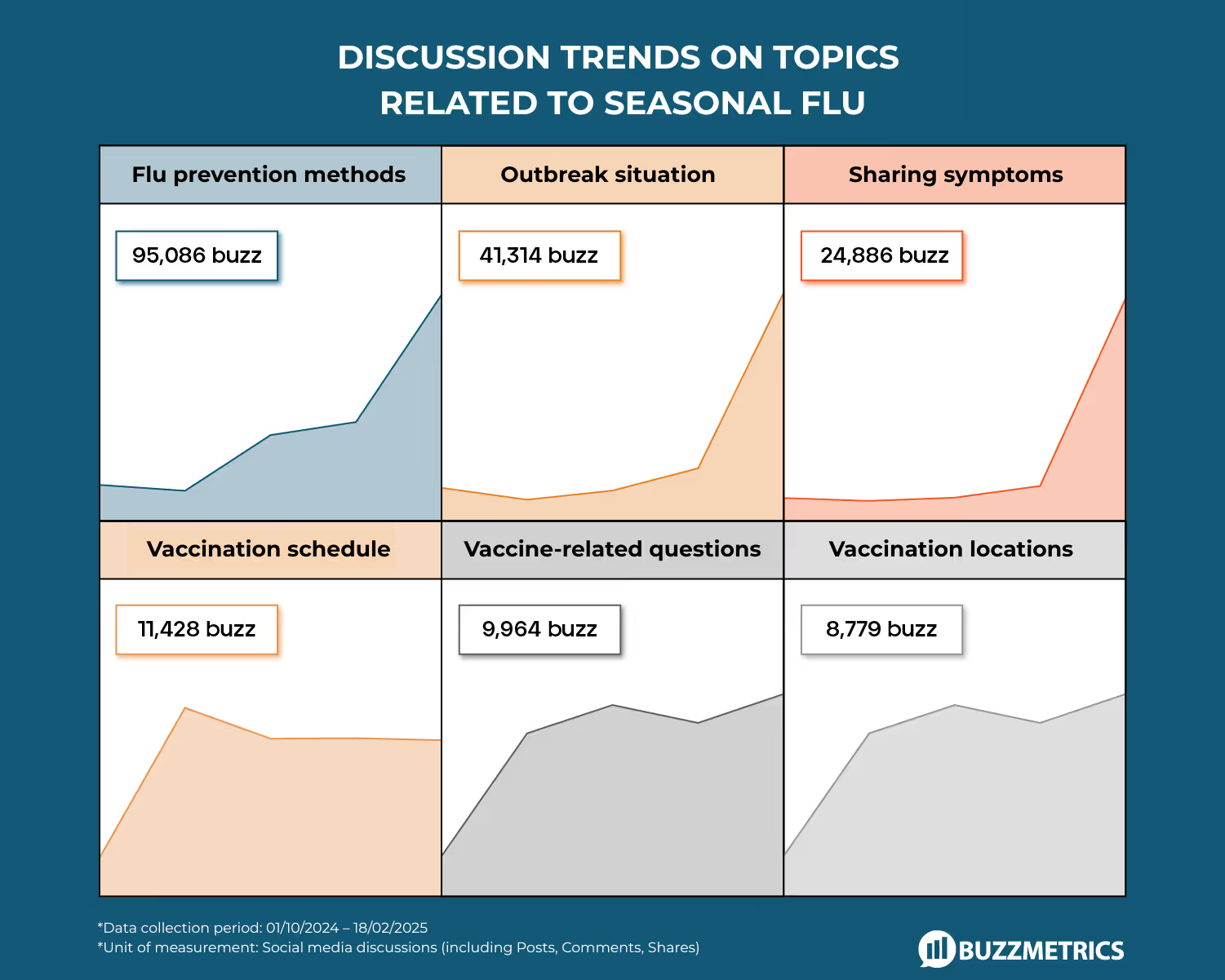
During normal periods, discussions about seasonal flu primarily revolve around questions regarding vaccines, vaccination schedules and clinic locations. However, during peak periods, the scope of discussion significantly broadens.
Users began to focus on symptoms, prevention methods and the veracity of circulated information. Notably, news such as "13,000 deaths in the U.S." caused significant public alarm and raised doubts about the transparency of information sources, suggesting potential exaggeration for attention. These discussion types are rarely observed during low periods, reflecting the community's heightened anxiety and sensitivity to health risks.
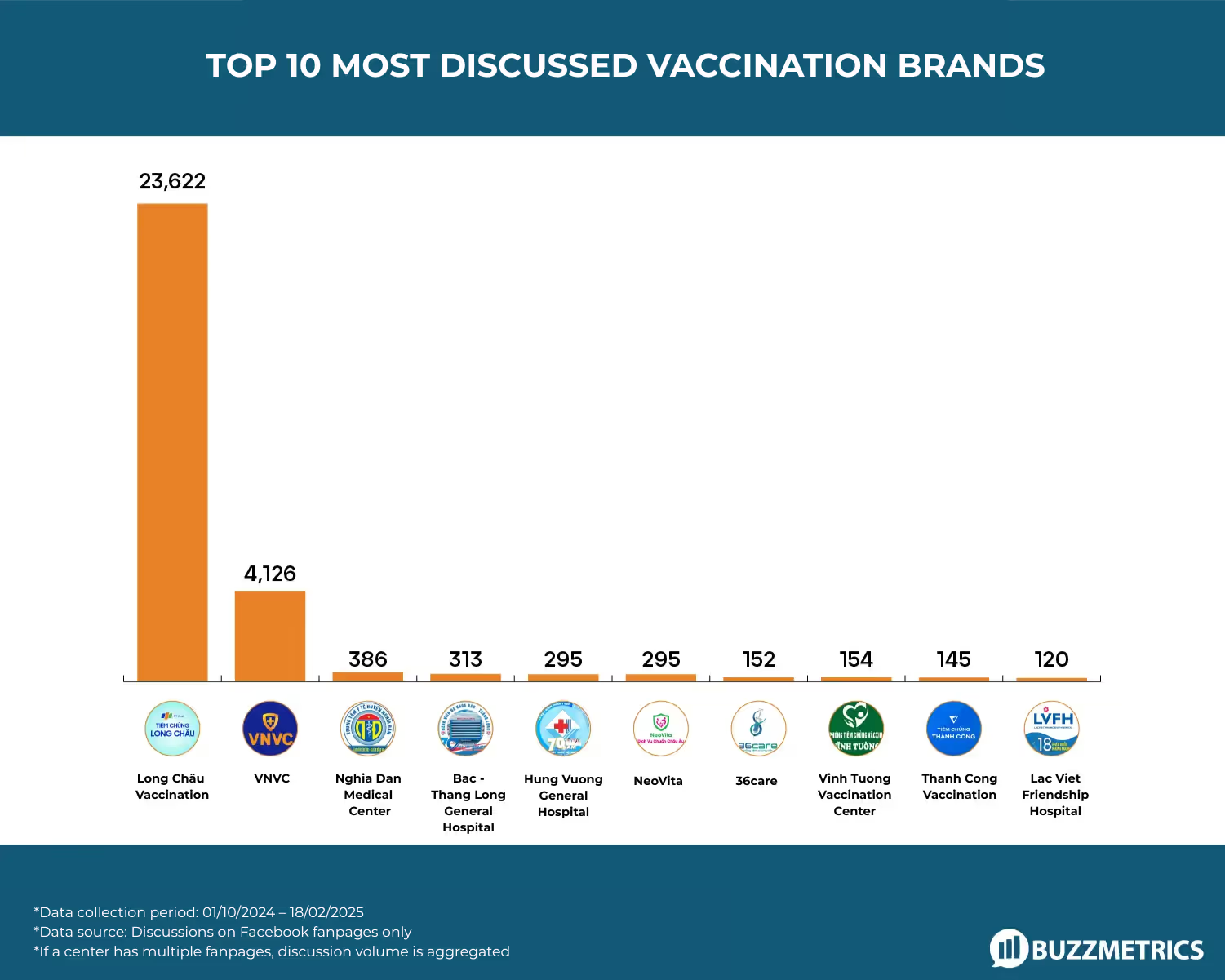
Data also indicates varying levels of presence for vaccination brands during the peak period. Long Chau Vaccination consistently appeared in discussions due to its ongoing communication strategy for seasonal flu service packages. However, at the peak, VNVC surpassed it in mentions, primarily driven by its highly shared knowledge-based content and updates on the epidemic situation.
Beyond the two aforementioned centers, other vaccination hubs primarily attracted discussion from the Northern region, indicating a clear geographical segmentation in user interest.


The global economy has just experienced a tumultuous 2023, leading to gold - the safest haven - continuously hitting new highs. On social media in Vietnam, public reactions to the topic also correlate with the price fluctuations.
The global economy has just experienced a tumultuous 2023 marked by soaring inflation, escalating political tensions, and anticipation regarding fiscal policies in major countries, leading to gold - the safest haven asset with the best performance - continuously reaching record highs. On social media in Vietnam, public reactions to the topic also show a certain correlation with price fluctuations. Let's delve into analysis and insights with Buzzmetrics in the following article.
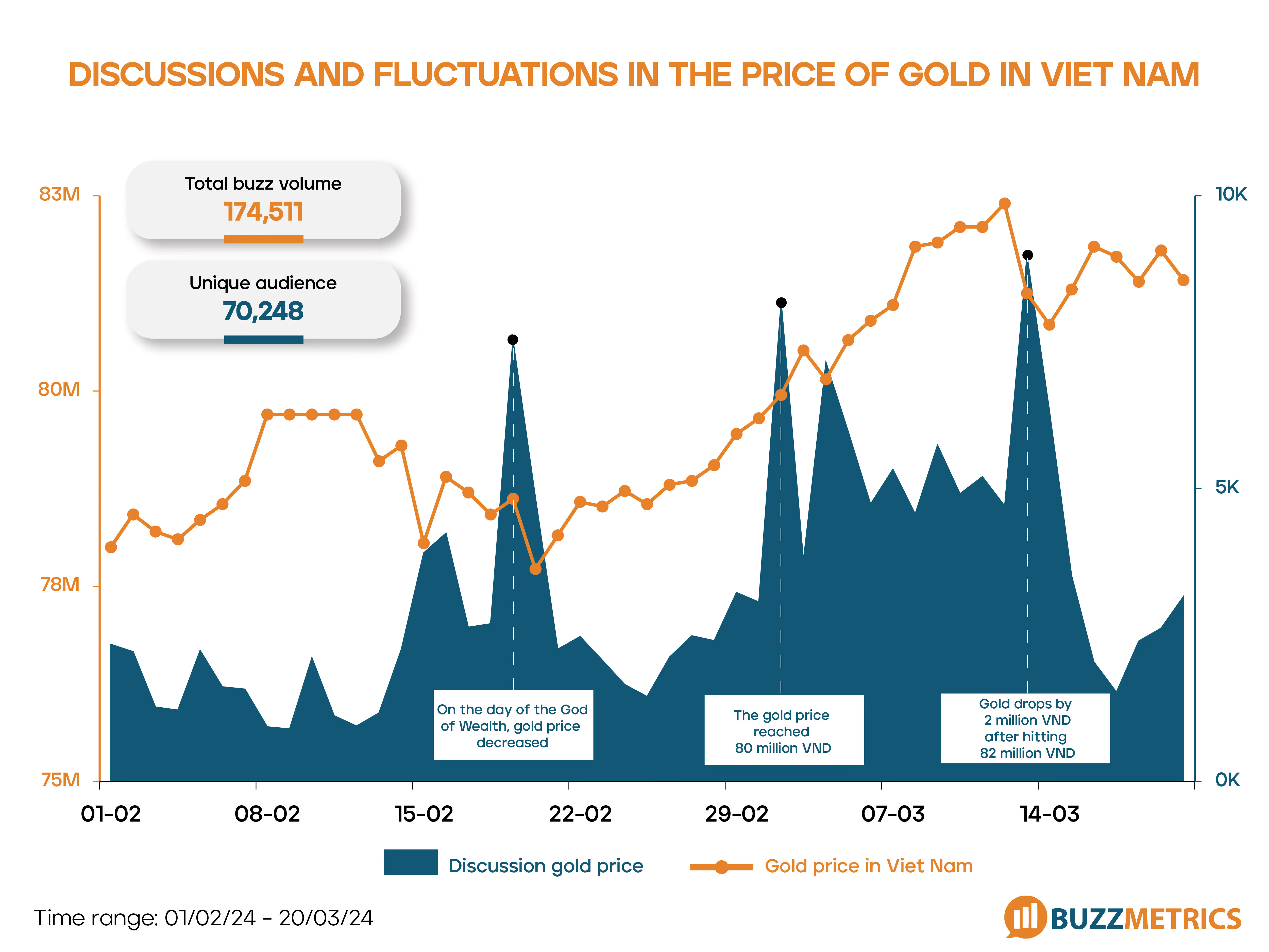
Since early February, Buzzmetrics' observations indicate that discussions on social media regarding gold prices only began to pick up after the Lunar New Year period, coinciding with a time when the short-term trend of gold prices was still uncertain. However, after February 15th, as the upward momentum of gold prices continued and consistently broke records, the volume of discussions also simultaneously trended upwards. However, the discussions truly surged due to specific catalysts, notably:
(1) The emergence of a special occasion: By February 16th, the volume of discussions surpassed the usual levels due to the unusual fluctuations in gold prices and peaked officially on the Day of the God of Wealth (February 19th). This day is considered by Vietnamese people as a time to rush to buy gold to seek good luck for the year. Hence, discussions about gold prices surged due to buying and selling activities. In a humorous sense, discussions about gold prices were even influenced by spiritual factors. However, afterwards, the daily discussions about gold prices returned to pre-Day of the God of Wealth levels until the end of February.
(2) Gold price reaching a notable milestone: On March 2nd, when the price of gold reached the milestone of 80 million VND per tael, users began to reignite their interest in gold prices. Prior to this, gold prices experienced a decline on the Day of the God of Wealth before rebounding for over a week consecutively.
(3) Significant fluctuations between two consecutive days: Despite gold prices continuing to rise throughout the first half of March, social media discussions only surged once again on March 13th - the moment domestic gold prices dropped by 2 million VND after surpassing the 82 million VND per tael mark.
As of March 21st, discussions about gold prices are showing signs of an upcoming increase, following a proposal to abolish the gold bar monopoly - a proposal that caused a plummet in gold bar prices.
In summary, over the past two months, the topic of gold prices has heated up sequentially due to the following news events: (1) The Day of the God of Wealth - (2) Gold reaching a notable milestone (80 million VND per tael) - (3) Significant fluctuations in gold prices between two consecutive days (2 million VND). However, each time reaching a peak, discussions about gold prices quickly cool down the next day, despite the media continuously updating developments regarding gold prices.
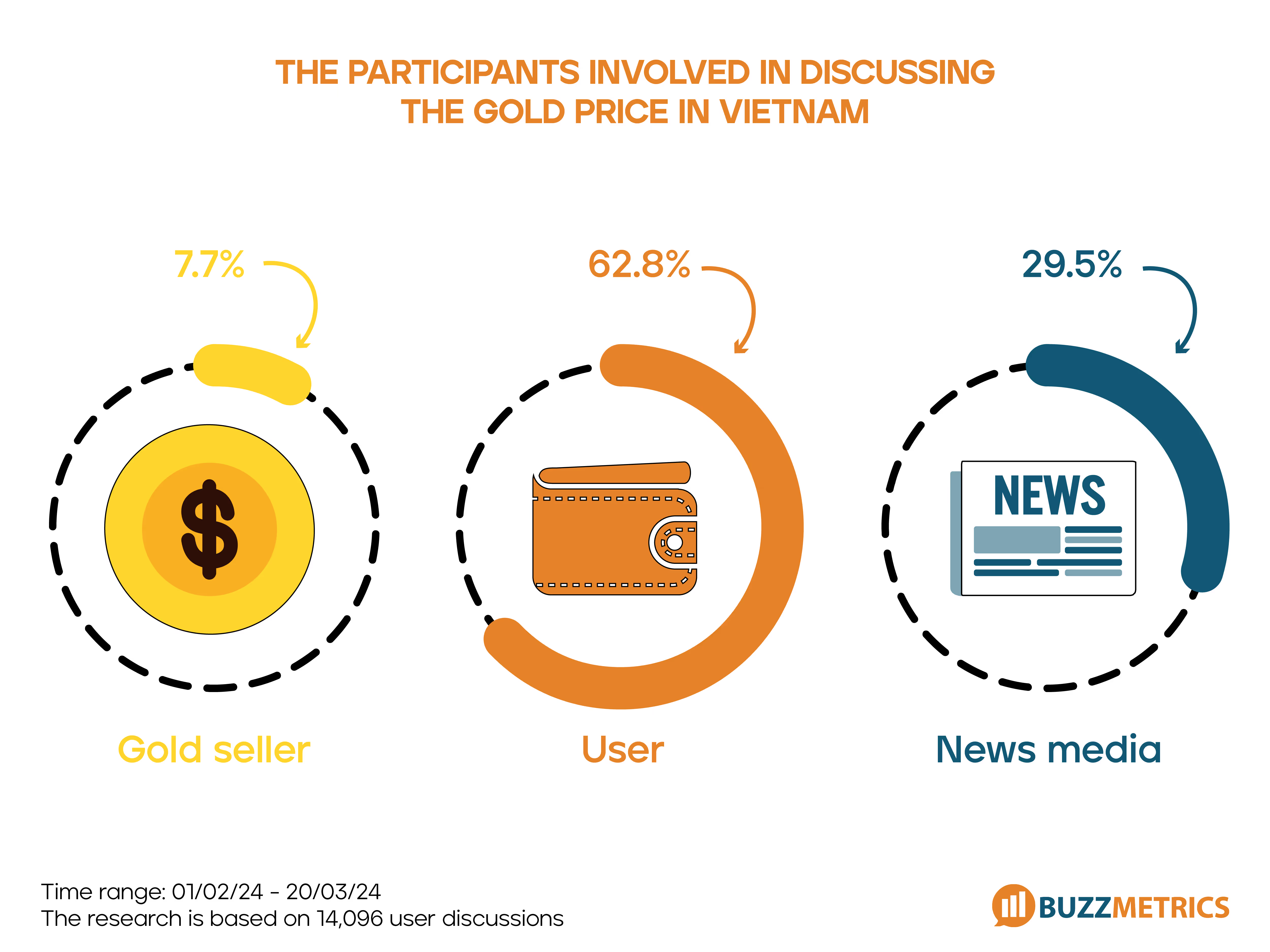
Gold prices are a topic primarily discussed by users (including regular users, investors, and analysts), while the media represents the second largest discussion force with almost continuous posting frequency, closely following the daily fluctuations in gold prices. Alongside the sharp rise in gold prices, while many users express joy over profitable investments, numerous individuals who do not yet own gold or are considering acquiring more pose a significant question: Should they buy gold at present? This is also the dominant discussion topic, accounting for 47% of the total discussions related to gold prices during this period.
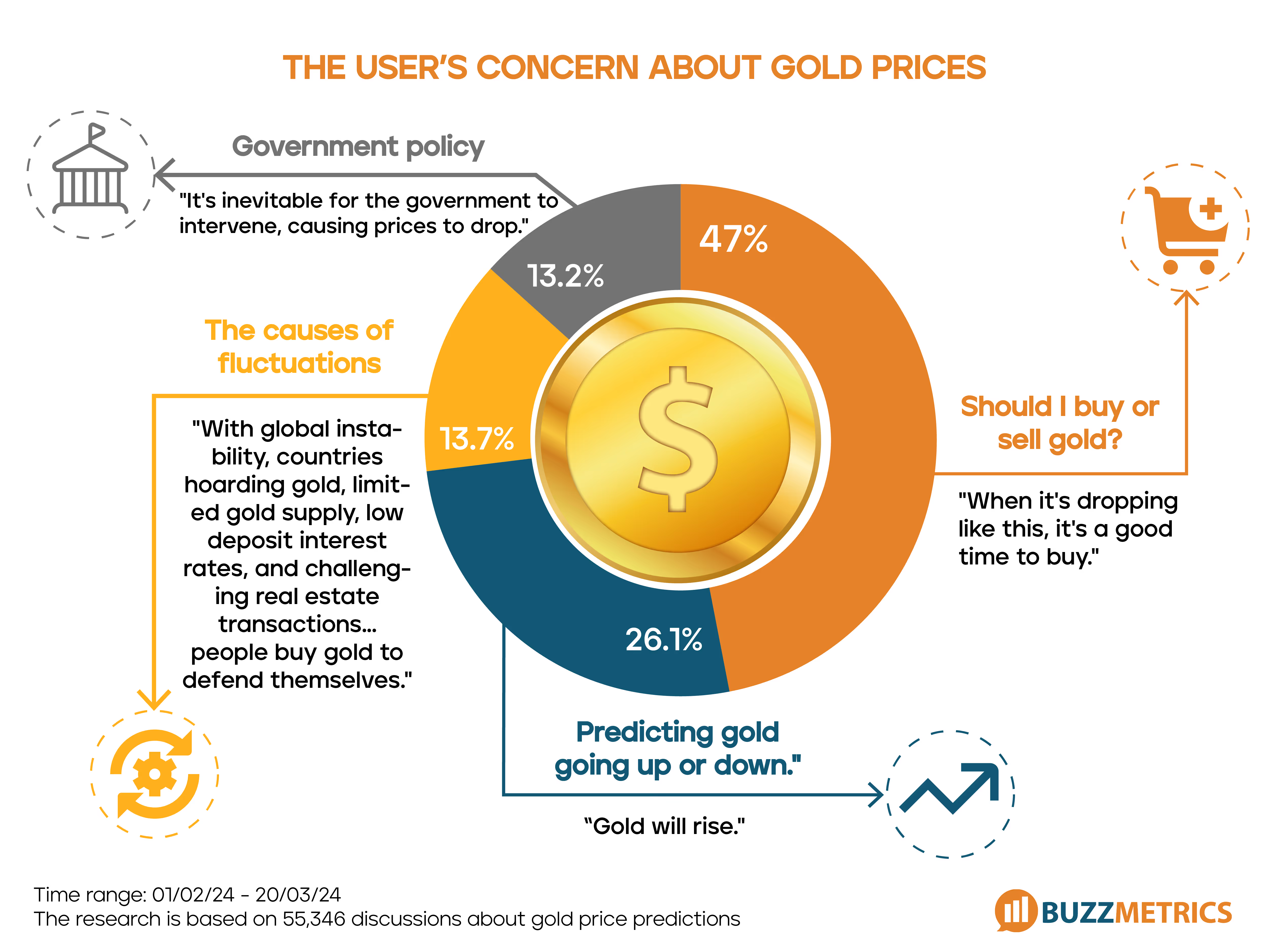
(1) To buy or sell gold: The largest analytical topic, involving participation from several financial experts. These experts not only analyze whether one should buy or sell gold but also provide education about gold and investment. According to Buzzmetrics' evaluation, the general consensus among these experts is that it is not advisable to invest in gold at this time. Further details will be explored in the following section.
(2) Explaining the current situation: Providing insights into why gold prices globally have experienced such significant fluctuations and why there is such a large disparity between the price of gold in Vietnam and the global price. By March, the price of gold in Vietnam and globally had diverged by 20 million VND.
(3) Government impact: With gold prices skyrocketing, public opinion is raising questions about the role of the government in regulation. The decision of the State Bank to abandon the monopoly on gold bar prices has sparked even livelier discussions. Public discourse is focused on analyzing the correlation between government policies and the gold price situation.
(4) Predictions of gold price movement: A topic involving participation from both analytical experts and regular users. Both experts and ordinary users predict that gold prices will continue to rise if considering the long term. Even when gold prices decrease on a given day, users still believe they will rise again in the future. Predictions of gold price decreases usually take into account short-term future scenarios or considerations of government policies.

When considering specific growth levels, international experts believe that gold could reach 110 million VND within the next 12-18 months. There are several reasons cited by experts, including inflation, the US dollar, geopolitical factors, and economic conditions. Domestic experts also share the view that gold prices will increase, but not to the extent of 110 million VND. In the upcoming period, gold could potentially reach 85 million VND. The reason given by experts is that gold in Vietnam is not heavily influenced by microeconomic conditions but rather by government policies, especially the topic of gold bar monopoly that has been mentioned. Experts also do not rule out the possibility of gold prices sharply decreasing if Decree 24 is adjusted. Gold dropping to 60 or 70 million VND per tael is a possibility.
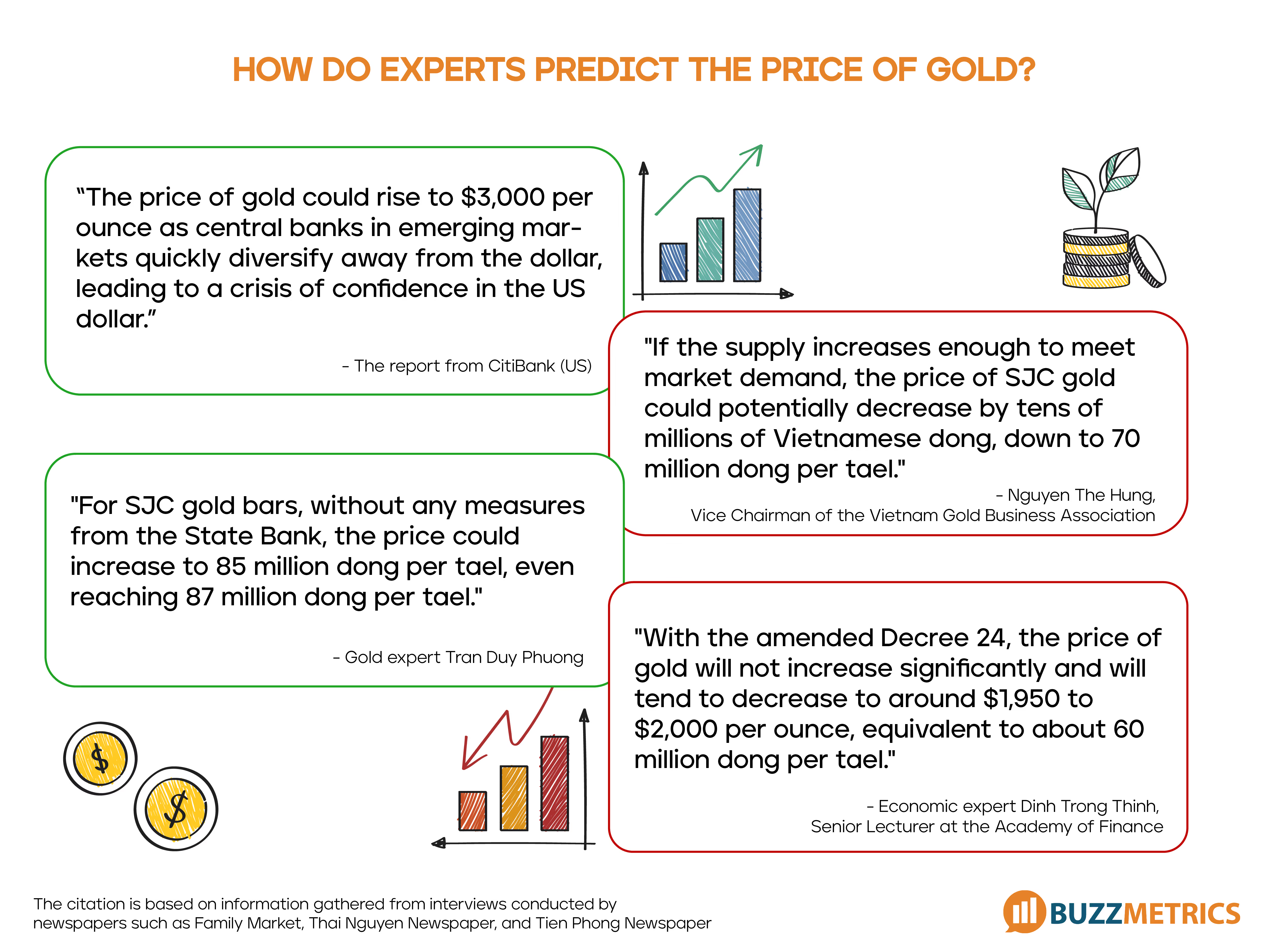
In general, Buzzmetrics' survey of gold prices on social media indicates:
(1) Alongside the fluctuation of gold prices, the volume of discussions on social media also experiences corresponding fluctuations.
(2) Faced with the continuous record-breaking performance of gold, users often pose questions about whether to buy or sell gold, predicting the movement of gold prices. This indicates users' interest in the topic of gold prices.
(3) Both users and expert analysts share the common belief that gold will increase in value in the long term. However, experts also add that government adjustments will help significantly decrease gold prices and narrow the gap compared to global gold prices. In the upcoming period, Decree 24 and other government adjustments will be the focal point of discussions on gold prices on social media.

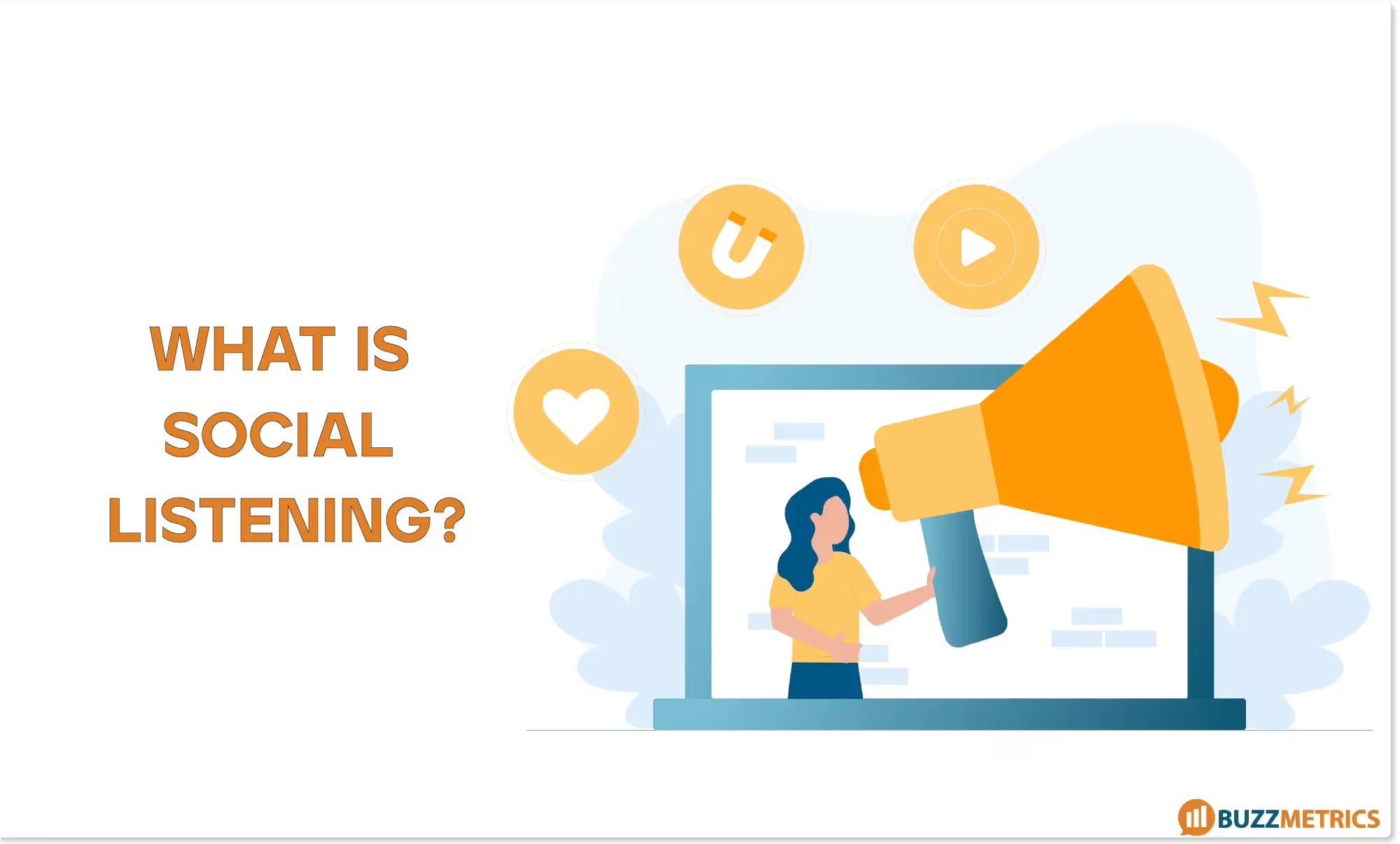
Social Listening is a form of market research based on social media discussions, helping to analyze brand health, campaigns, special events, and more...
Along with the development of social networks, Social Listening is also growing in application capabilities. If in the past, Social Listening was only about collecting social media data, today data collection is only a part of Social Listening. Measuring buzz volume or sentiment is no longer the only function of Social Listening. In the context of this article, let's look at old questions through a new lens: What is social listening and what role does it play in social media marketing?
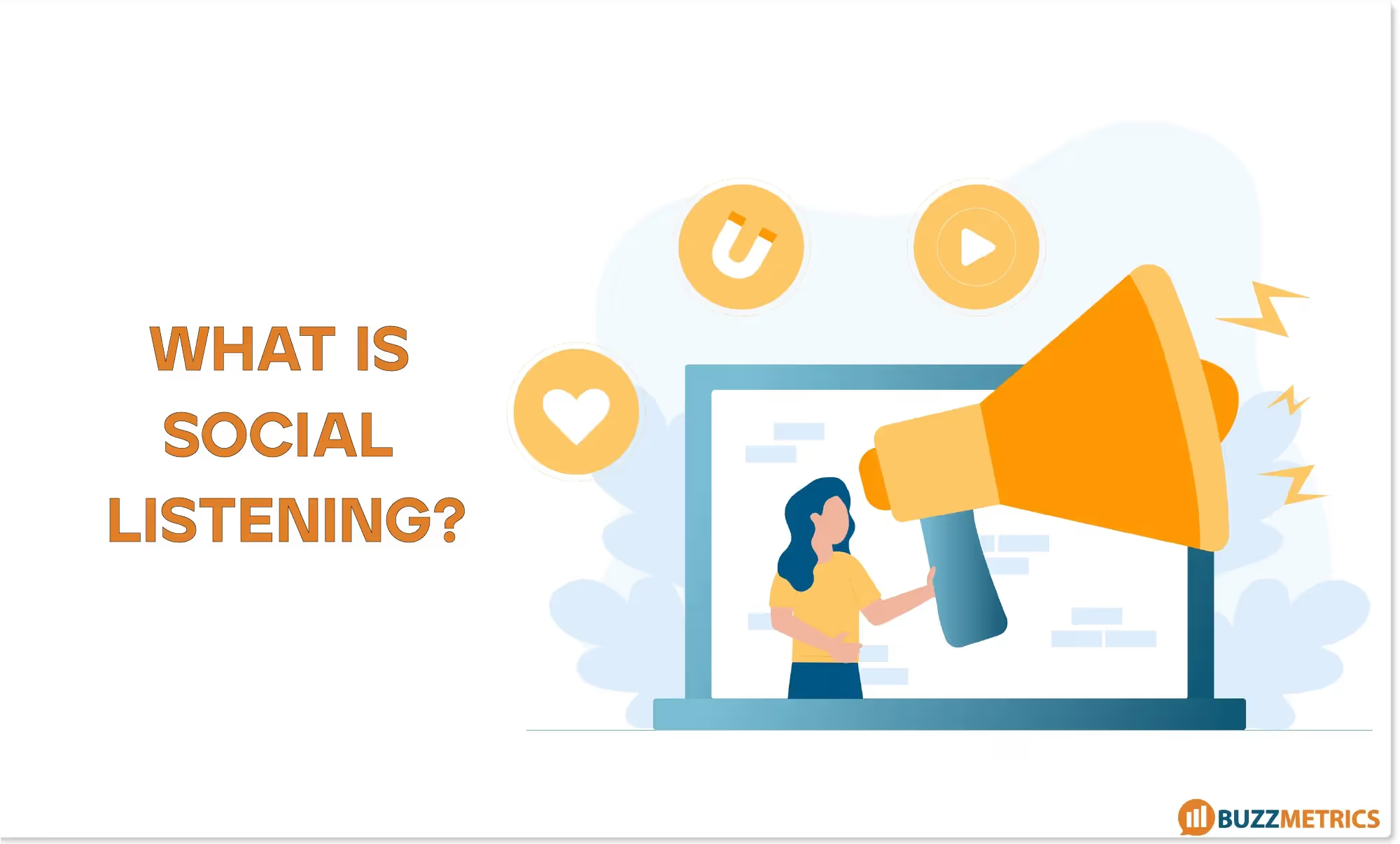
Social Listening is a form of market research that analyzes online user discussions across social media platforms. It involves the collection and analysis of conversations from various online platforms, including social media, forums, blogs, news sites, and review websites. Unlike traditional research methods, Social Listening works primarily with unstructured data, offering businesses real-time feedback from diverse users across different online platforms.
Typically, a Social Listening process follows these steps:
- Step 1: Build an analysis plan
Researchers begin by defining the context and research objectives, then set the key questions to be addressed.
- Step 2: Data collection
Using Social Listening tools, researchers gather data based on keywords from all social platforms, ensuring an accurate and comprehensive understanding of trends and industry data.
- Step 3: Data filtering and analysis
After collecting data, researchers filter out irrelevant or misleading information to ensure accuracy. Data is processed through AI systems and human verification to find potential insights.
- Step 4: Data visualization and reporting
Finally, the results are compiled into a complete report with visualized data for easier understanding and decision-making.
Social Listening data sources are not limited to major social media platforms like Facebook, Instagram, TikTok, or Threads. They also cover any medium that allows multi-way interaction, including forums, e-newspapers (comment sections), blogs, and e-commerce review sections.
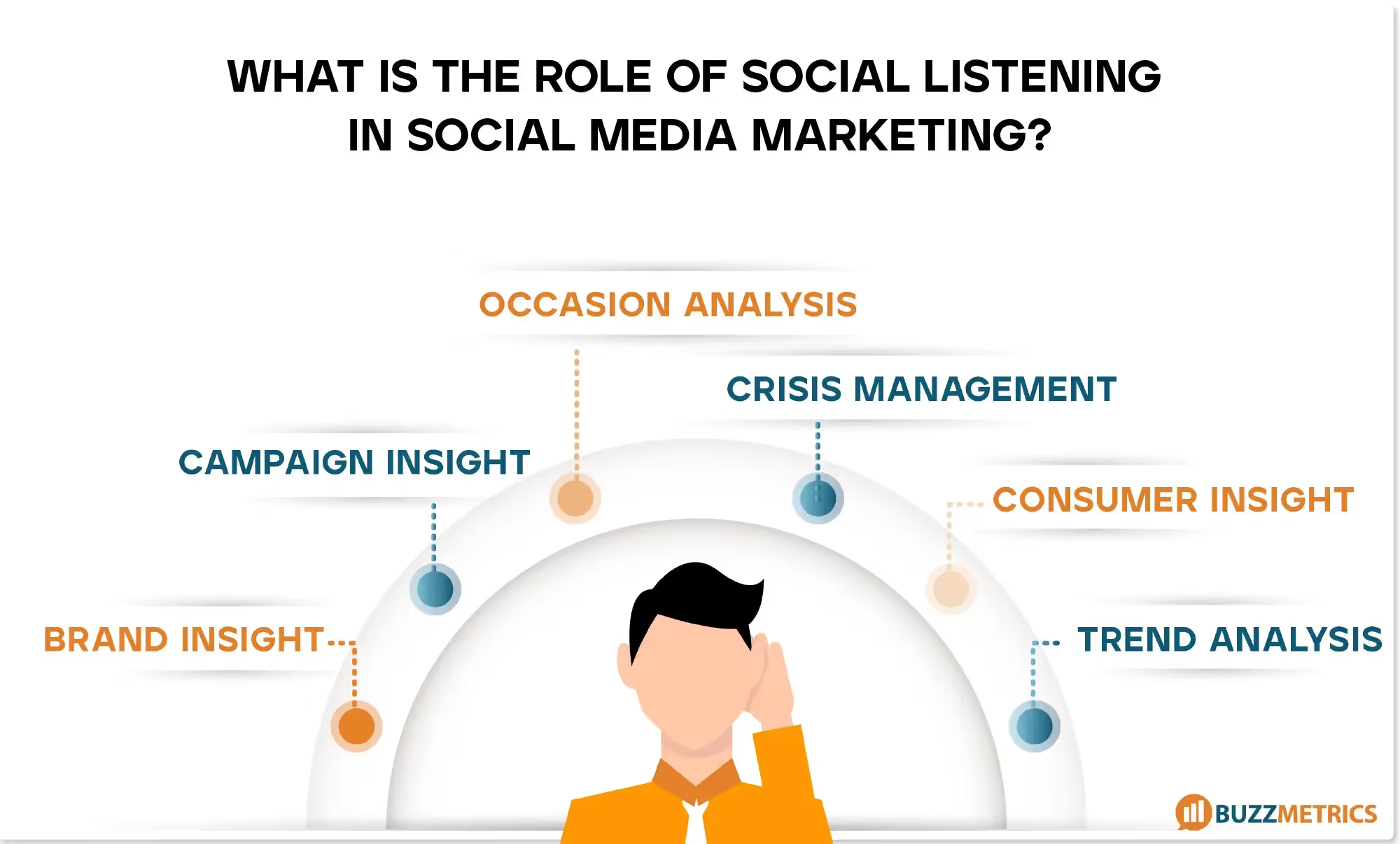
(A) API Data Collection
This method connects Social Listening tools to the APIs (Application Programming Interfaces) of social networks to retrieve posts containing specific keywords.
- Advantages: Allows access to all data from the network, including personal pages.
- Disadvantages: API reliability may fluctuate, leading to incomplete or inconsistent data over time.
(B) Site Data Collection
This method involves accessing listed sites to collect data without disrupting the websites, either by manual or automatic data gathering processes.
- Advantages: Ensures 100% of data on the site is collected.
- Disadvantages: Certain issues, like site changes or blocking, may cause temporary data shortages.
When conducting research via Social Listening, marketers should focus on key metrics to gain a comprehensive view of the research landscape and measure the effectiveness of their Social Media Marketing strategies:
- Buzz Volume: The number of discussions (posts, comments, or shares) about a specific topic.
- Share of Voice (SOV): Compares the discussion volume of a brand against competitors.
- Audience Scale: The number of individuals participating in discussions about a topic.
- Sentiment Score: Indicates users' emotions toward a topic, calculated by comparing positive and negative discussions.
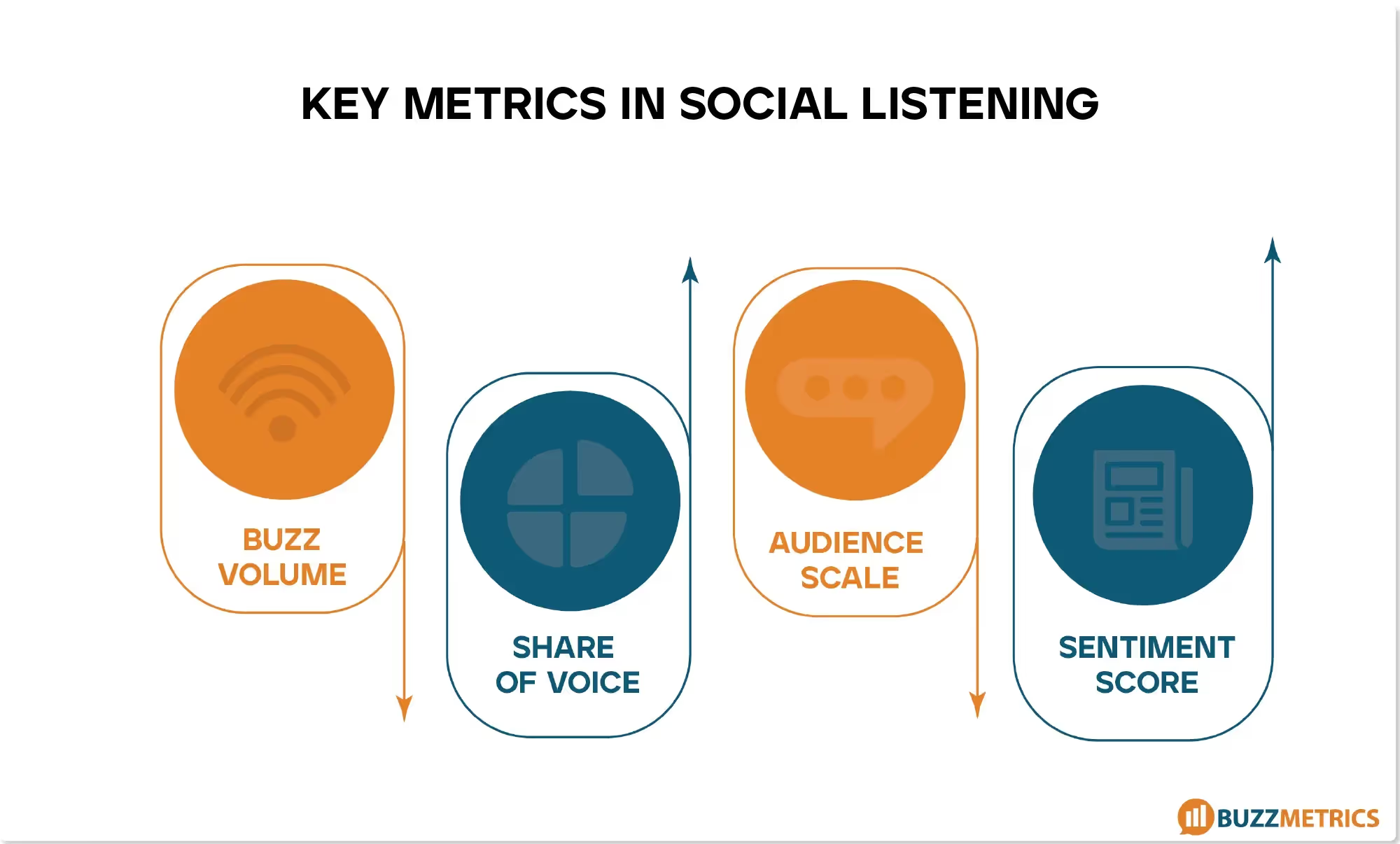
Initially, Social Listening was seen by many marketers as a purely measurement tool, providing basic metrics about campaigns or brands in comparison with competitors (such as discussion volume, participant count, sentiment scores, etc.). However, over time, social media has expanded significantly in scale. Users have become more familiar with Digital Transformation, sharing more than ever, and social media trends are emerging increasingly. As a result, the scope of social media data has broadened, offering a wealth of potential information to support Social Media Marketing strategies. Consequently, Social Listening has also evolved to gather data across various platforms and meet diverse research needs from marketers.
For each research focus, marketers can apply Social Listening to a range of different areas. Typically, marketers can use Social Listening for three main research directions: (1) Insight Understanding, (2) Campaign Tracking, (3) Crisis Management.
This research can provide a comprehensive overview of a specific industry, including e-commerce performance, brand image identification, and opportunities for differentiation. It also outlines the target audience's profile, capturing public attitudes and usage toward products/brands/industries.
a. Industry Competitive Landscape:
For instance, the chart below shows the most-discussed functional food brands over a certain period. From this, brands can identify their competitors, understand their position in the competitive landscape, and aim for top-of-mind awareness among consumers. Moreover, by quoting user discussions, researchers can pinpoint issues regarding public perception of both the brand and its competitors. This allows the brand to compare, recognize problems, and take corrective action if needed.
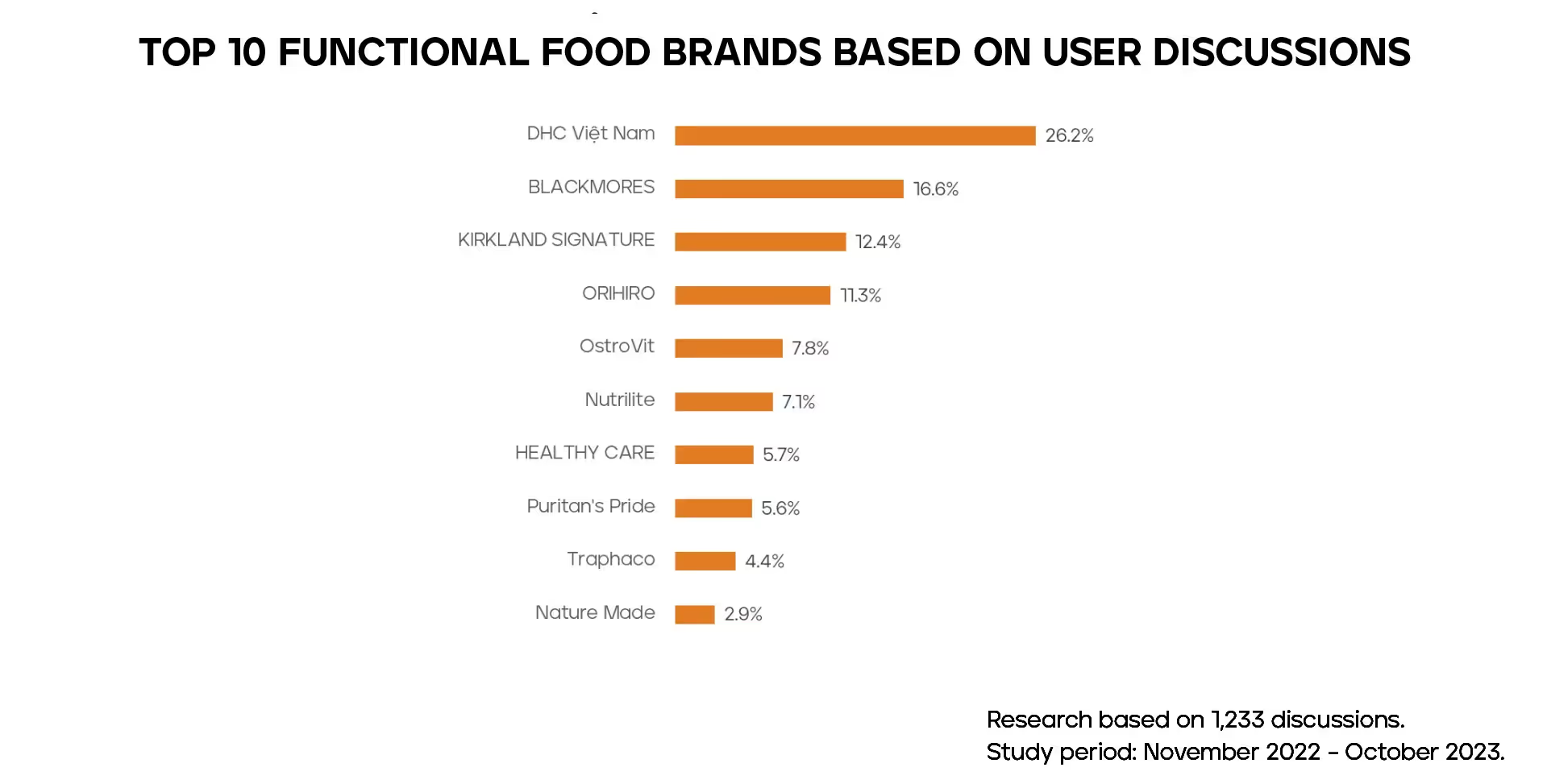
→ Read more: Exploring Insights in the Functional Food Industry: Challenges and Opportunities in the Digital Era
b. Brand Image and Differentiation:
An example of Buzzmetrics research on leading diaper brands paints a detailed picture of brand differentiation. Compared to other brands, Molfix’s product performs exceptionally well in absorbency. However, aspects like softness and thinness received negative feedback. Molfix’s branding team can also monitor current customer perceptions of competitors and identify areas for improvement.
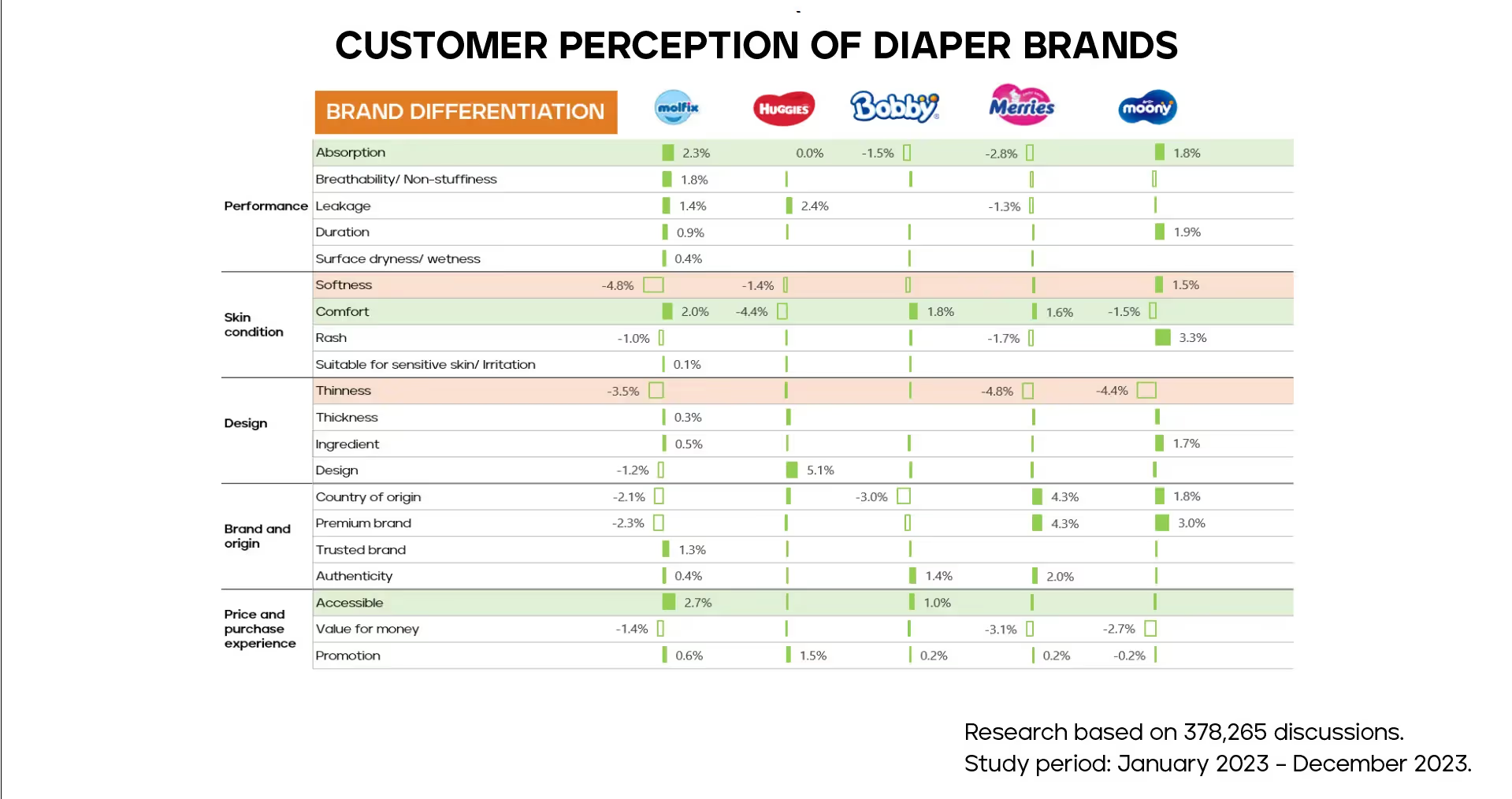
c. Usage and Attitude Research (UnA):
UnA research focuses on consumer discussions and plays a key role in unveiling the consumer landscape of an industry. It addresses key questions like:
- Users' interest levels in the product/brand on social media
- Awareness, usage, and consumer behavior displayed on social platforms
- Motivations and barriers to product/brand consumption
- General satisfaction/dissatisfaction with current products/services
- Users’ needs, unmet demands, or general expectations
d. Target Audience Segmentation:
In some cases, brands aim to understand consumers not just from a product buyer perspective but from a broader context that includes their lifestyle and habits. Social Listening can support brands in achieving this.
For instance, analyzing the most-discussed topics within Gen Alpha revealed that "love" was the top theme, surpassing even "education" and "games." This insight shows that to engage Gen Alpha, brands should consider using "love" as a central theme to attract attention and foster interaction.
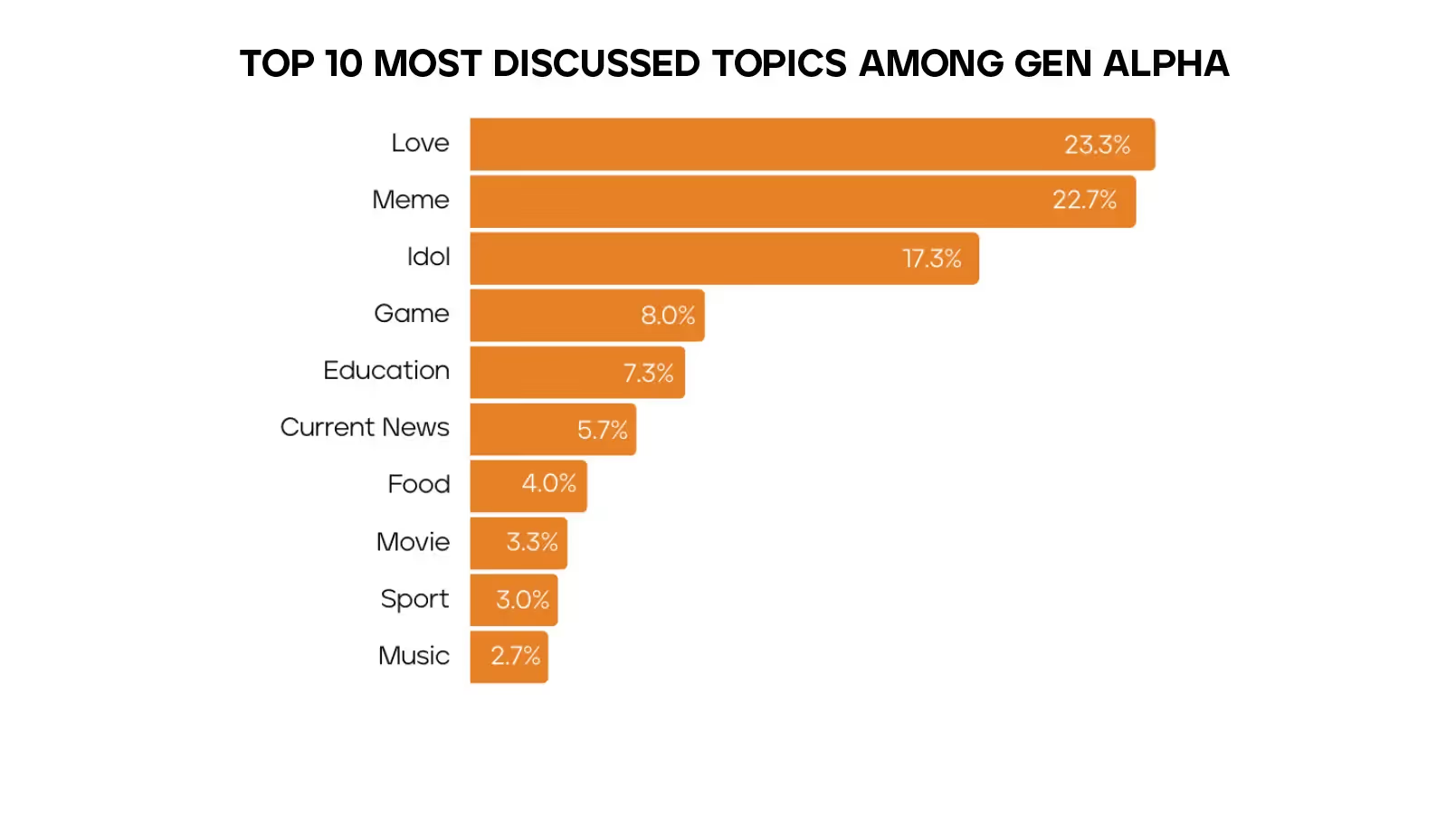
→ Read more: Gen Alpha: What Sets the Next Generation of Consumers Apart?
Notably, social media is segmented by interests. Therefore, identifying user groups and their main concerns is crucial in segmenting the social media audience. Pinpointing key interests and insights will help brands align their marketing tactics with user interests. As a result, branded content and messaging are more likely to appear in users' feeds, capturing attention, generating engagement, fostering recall and affinity, or even leading to user-generated content (UGC) related to the brand.
Social Listening supports marketers in planning, creating content, and adjusting strategies in real time throughout all phases of a campaign. It helps track brand sentiment and ensures campaigns align with audience expectations.
Today, even a small complaint on Facebook can cause significant damage to a brand. As consumers become increasingly familiar with social media, the likelihood of crises occurring rises. Our Social Listening data shows that while the number of crises has decreased as brands take a more proactive role in crisis management, the average scale of a crisis has grown significantly.
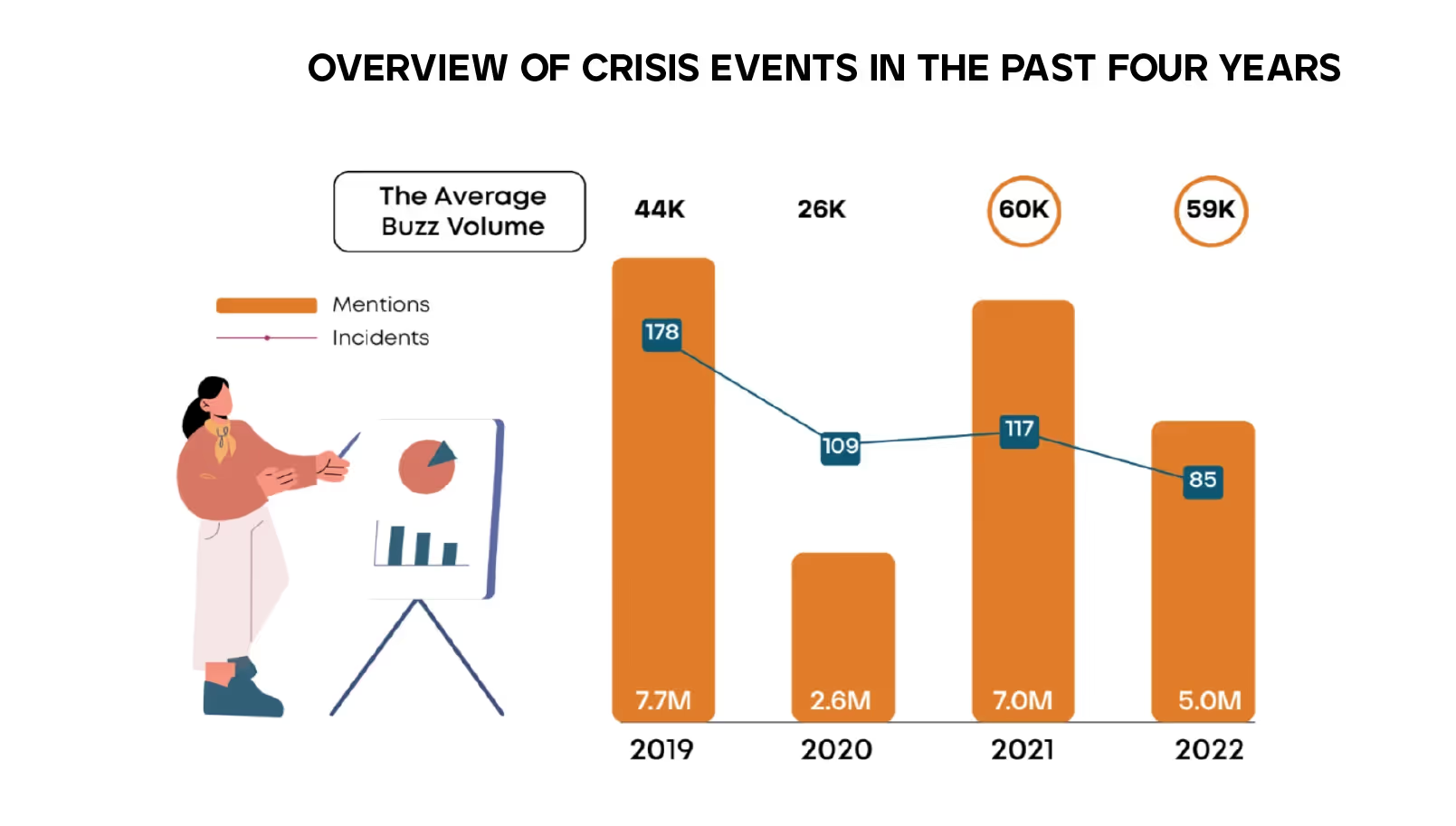
Crises may seem to occur randomly and can impact any brand for seemingly arbitrary reasons. This makes social media crises difficult to track and challenging for brands to respond to. However, through Social Listening, not only can crises be monitored, but their patterns can also be identified, allowing brands to develop strategic response plans.
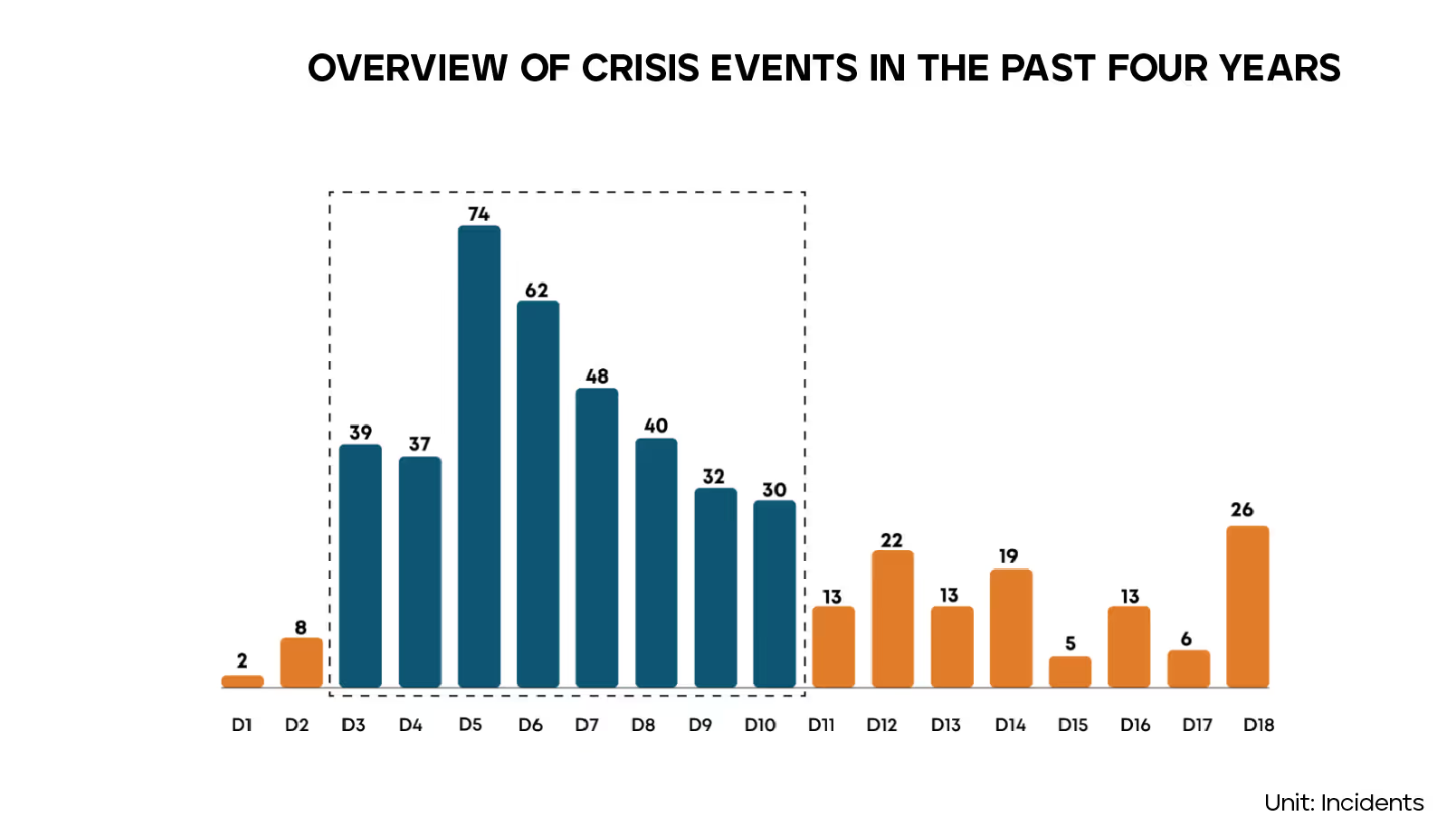
By analyzing user discussions on social media and providing actionable insights to brands, Social Listening plays a critical role in shaping communication strategies. The most common applications of Social Listening include gathering insights, tracking campaign performance, and managing crises.
To learn more about metrics, marketers can refer to here

